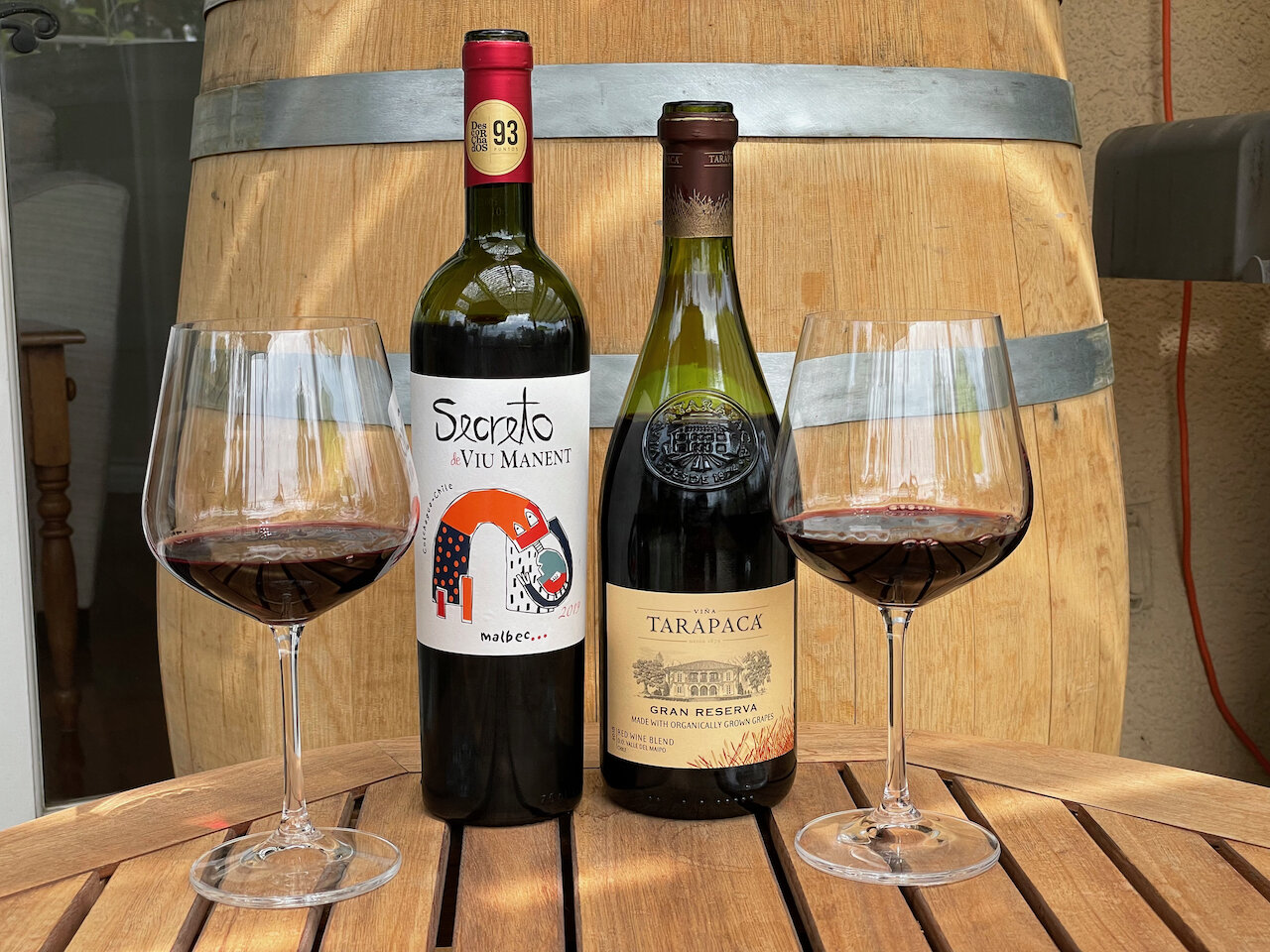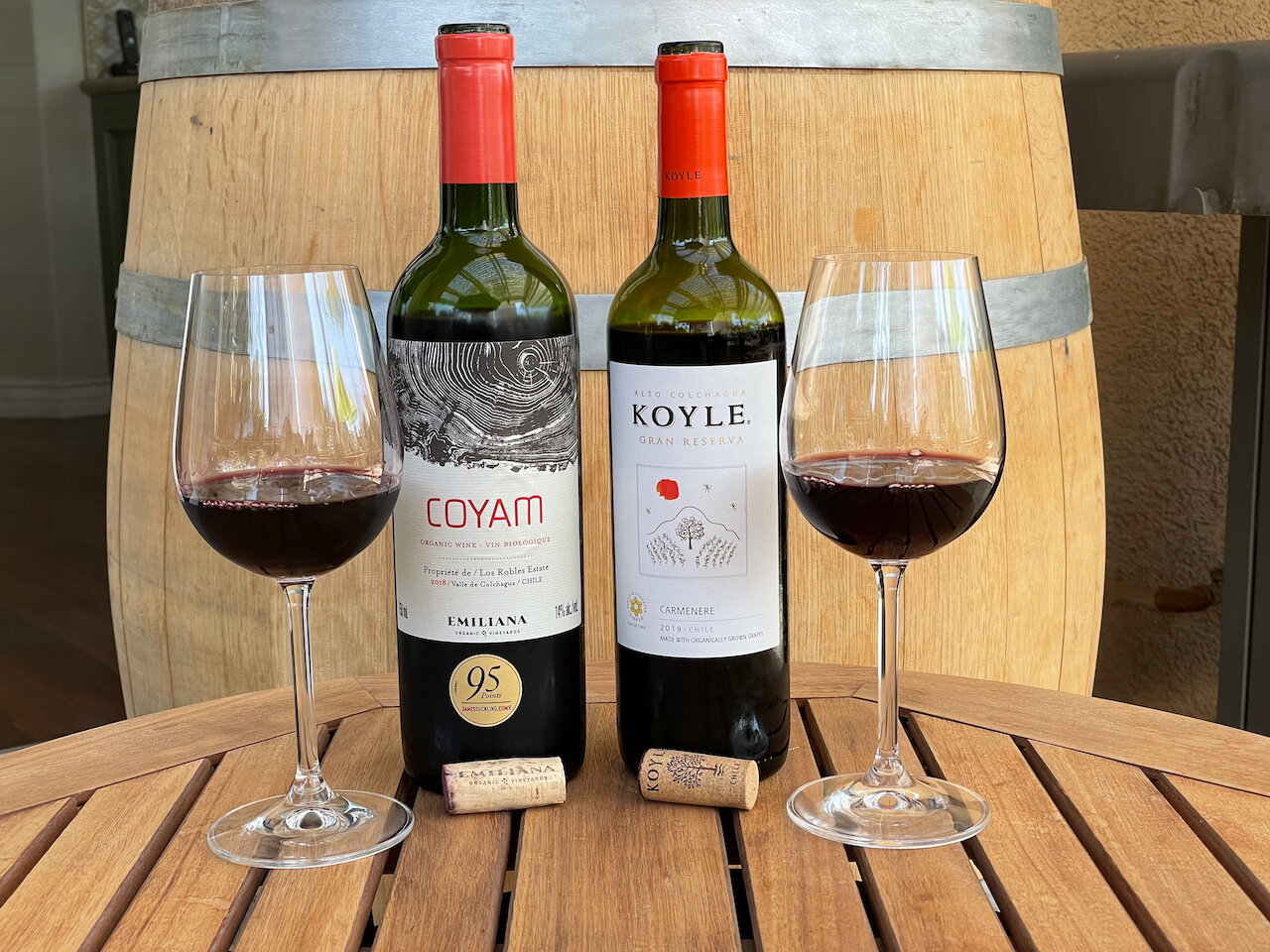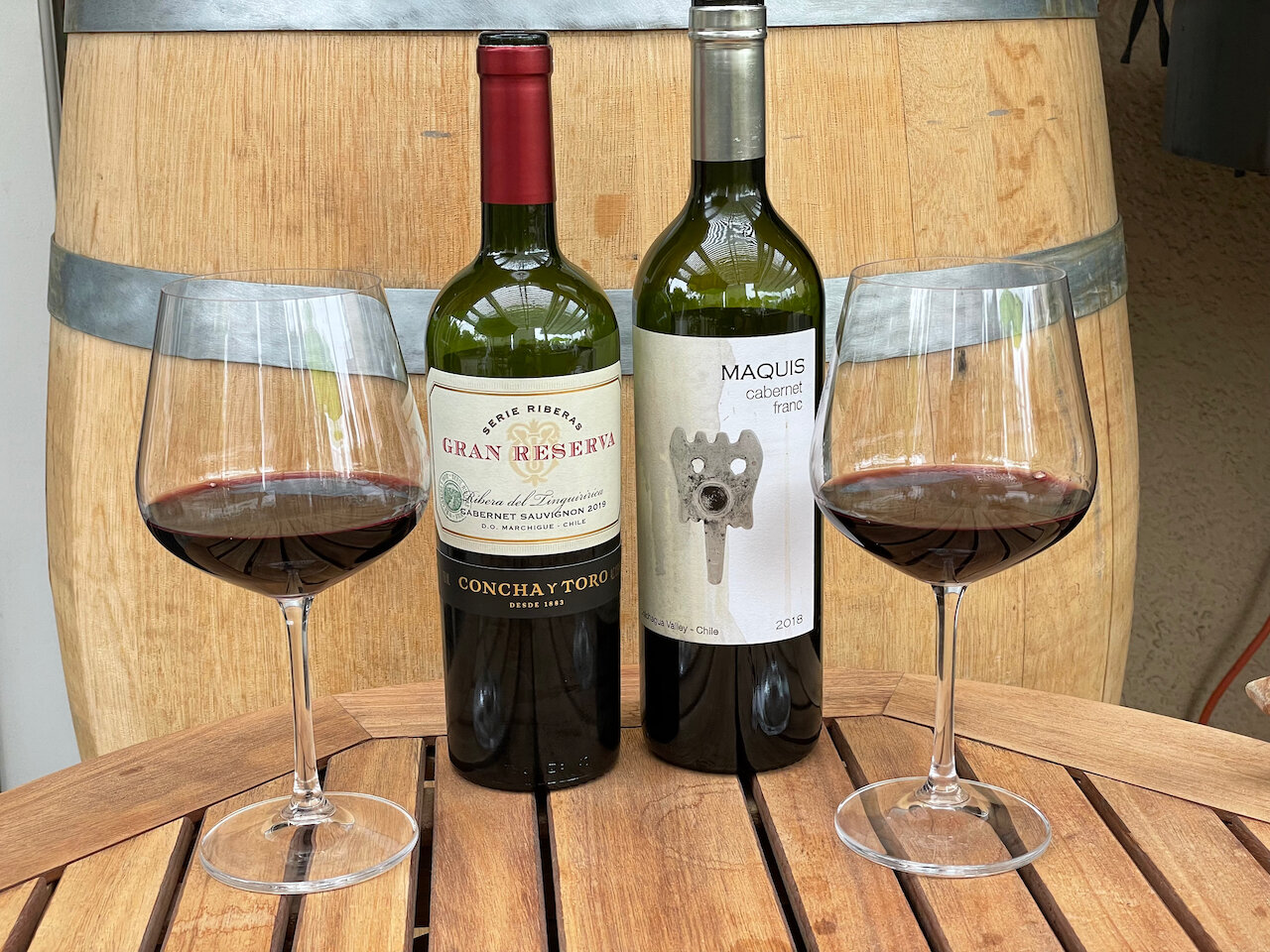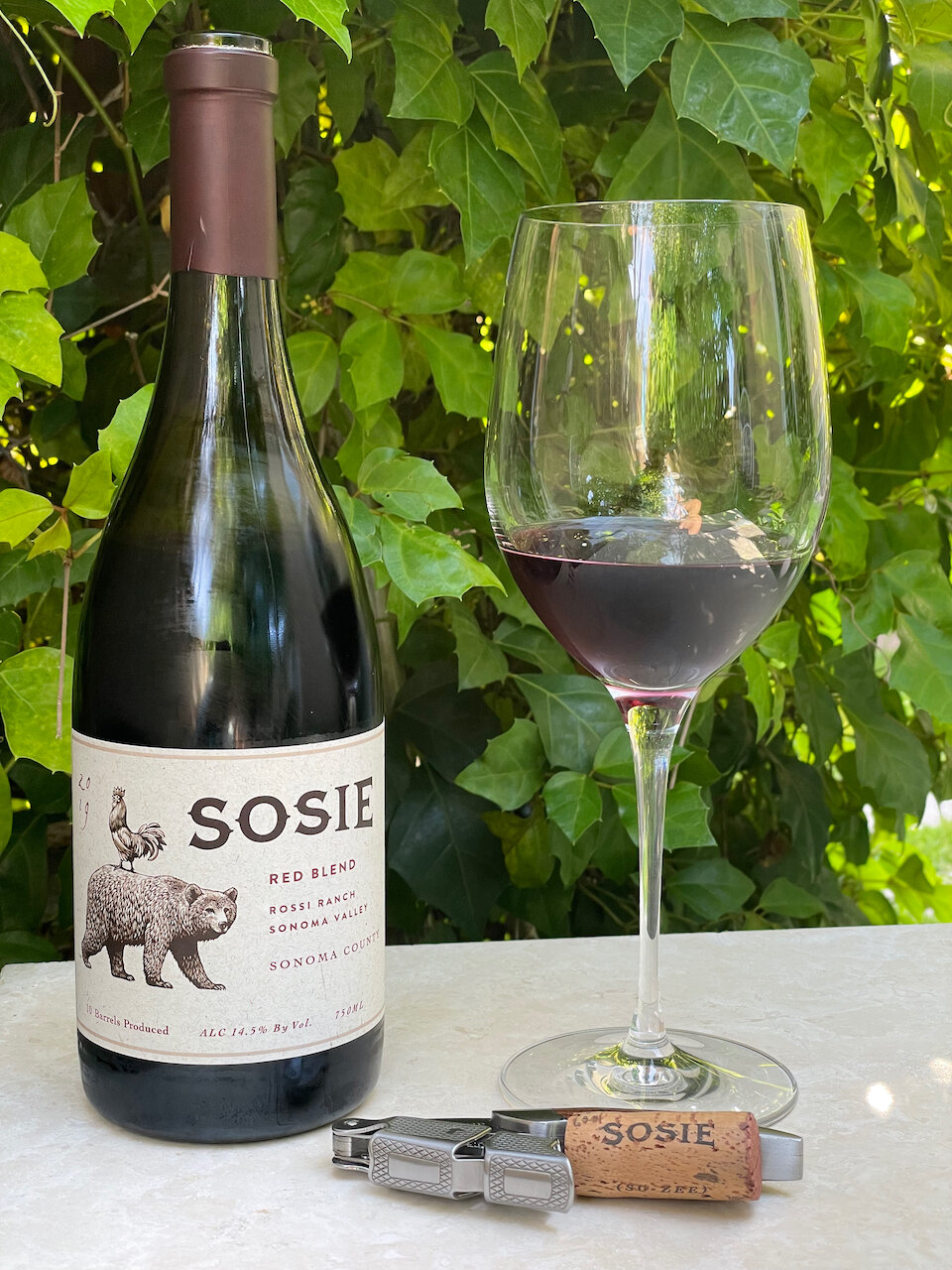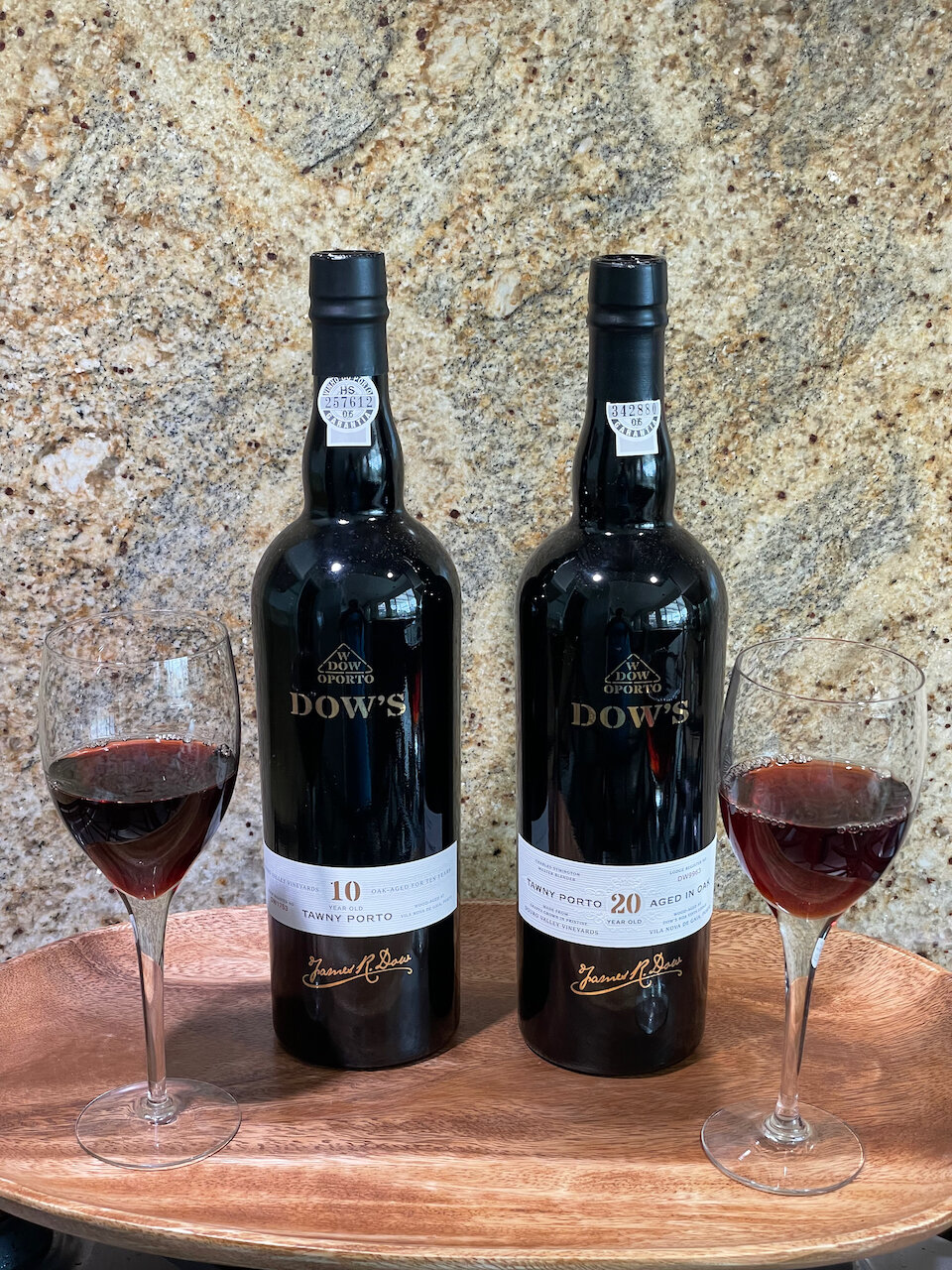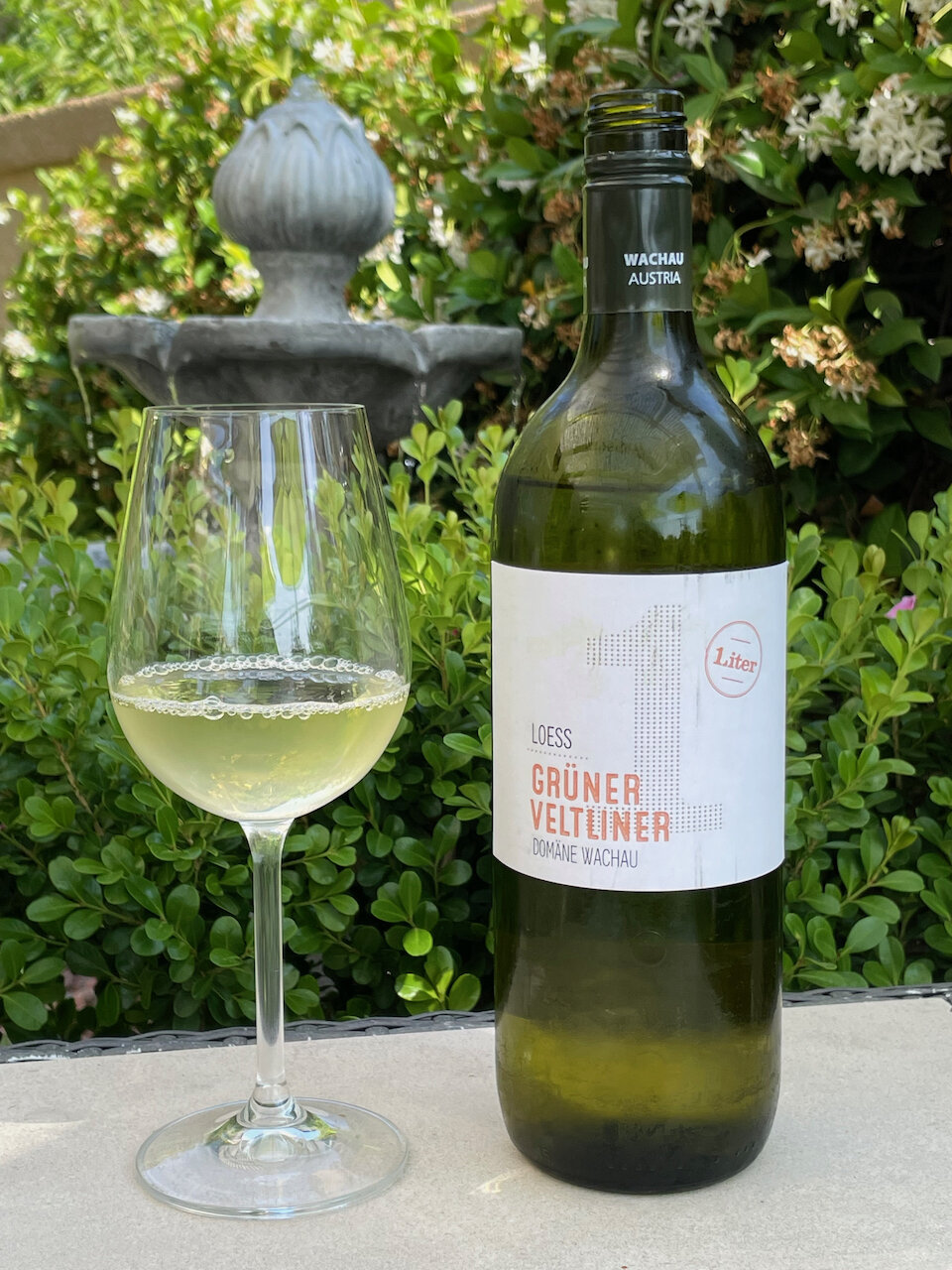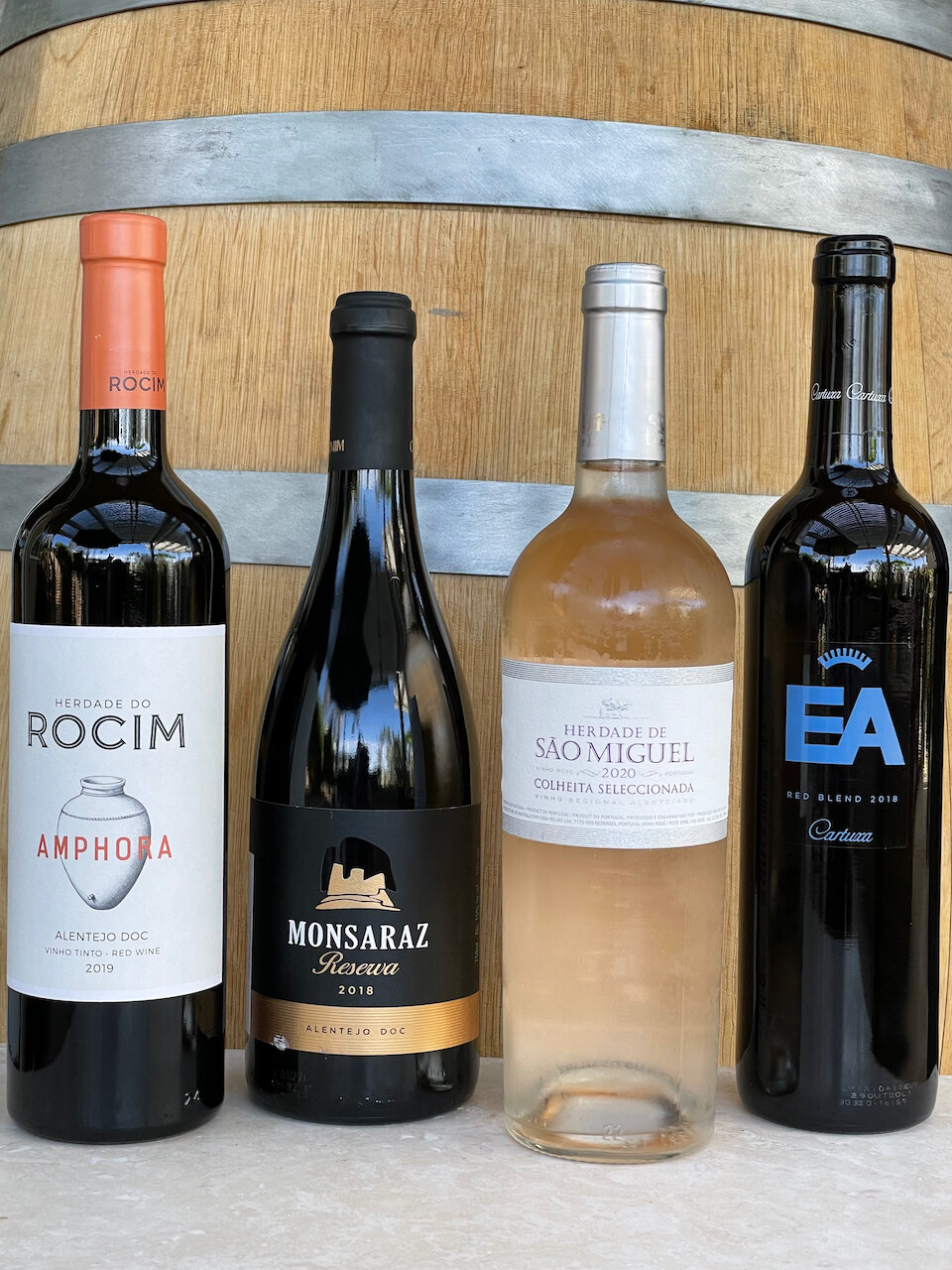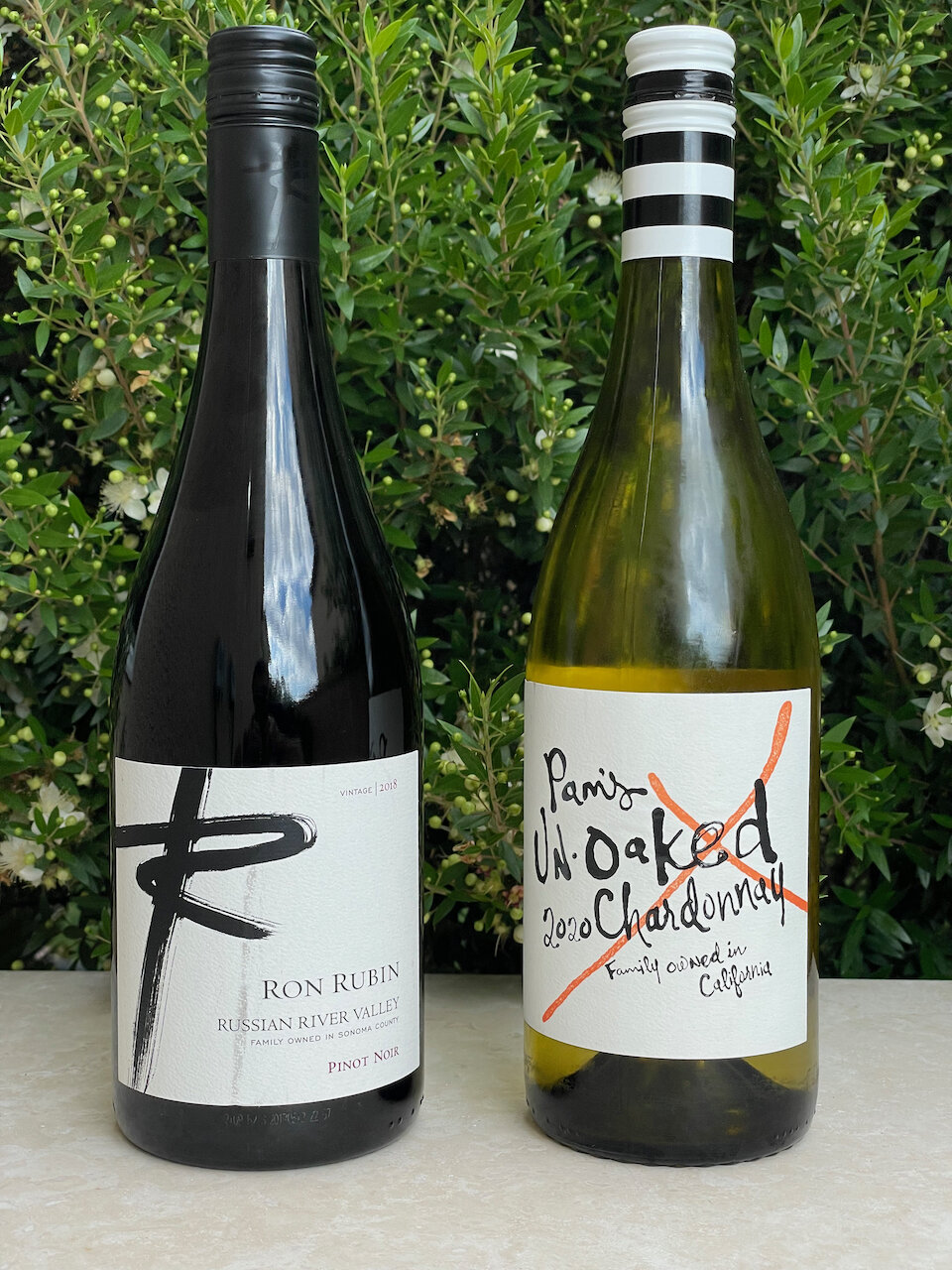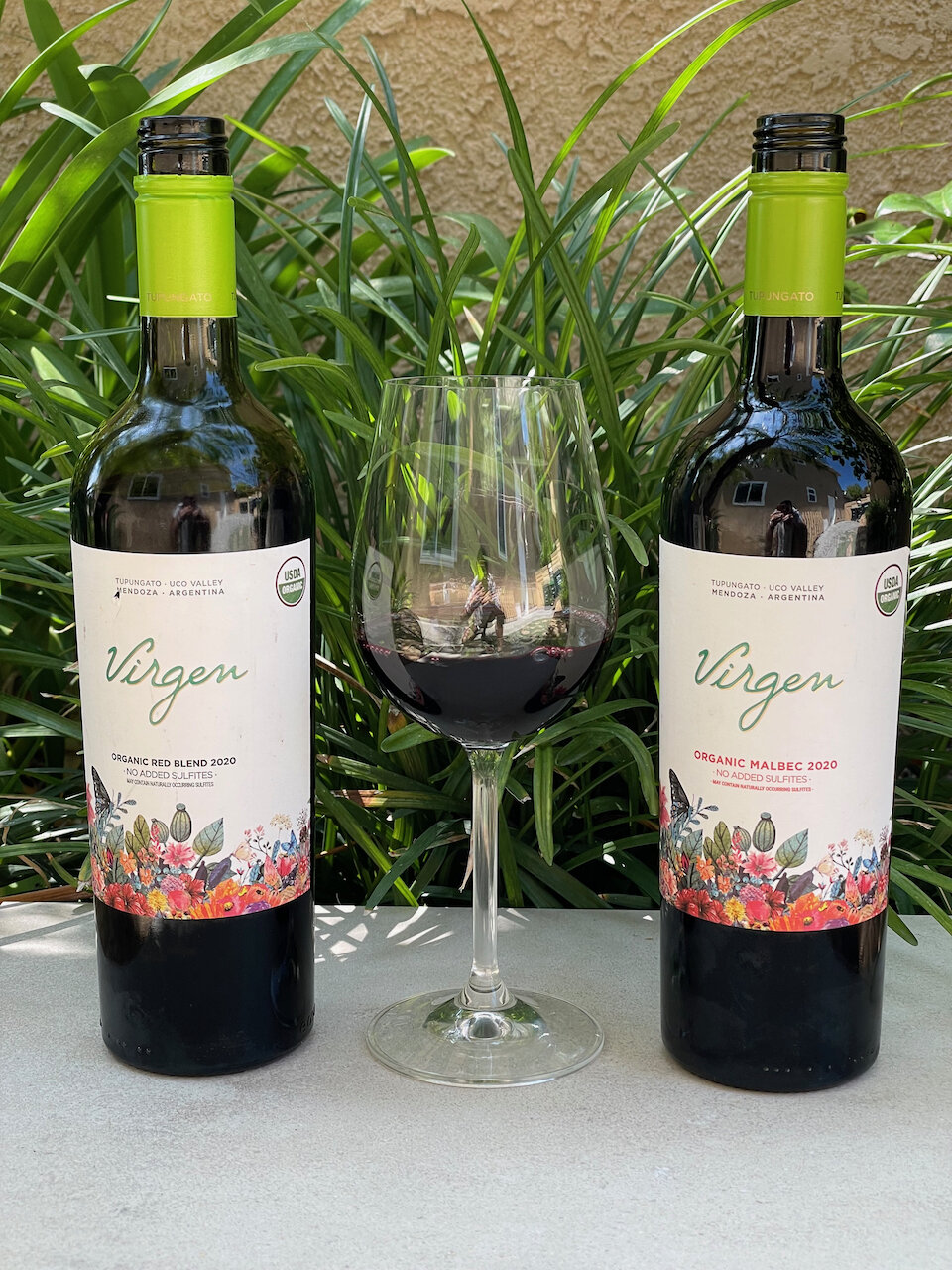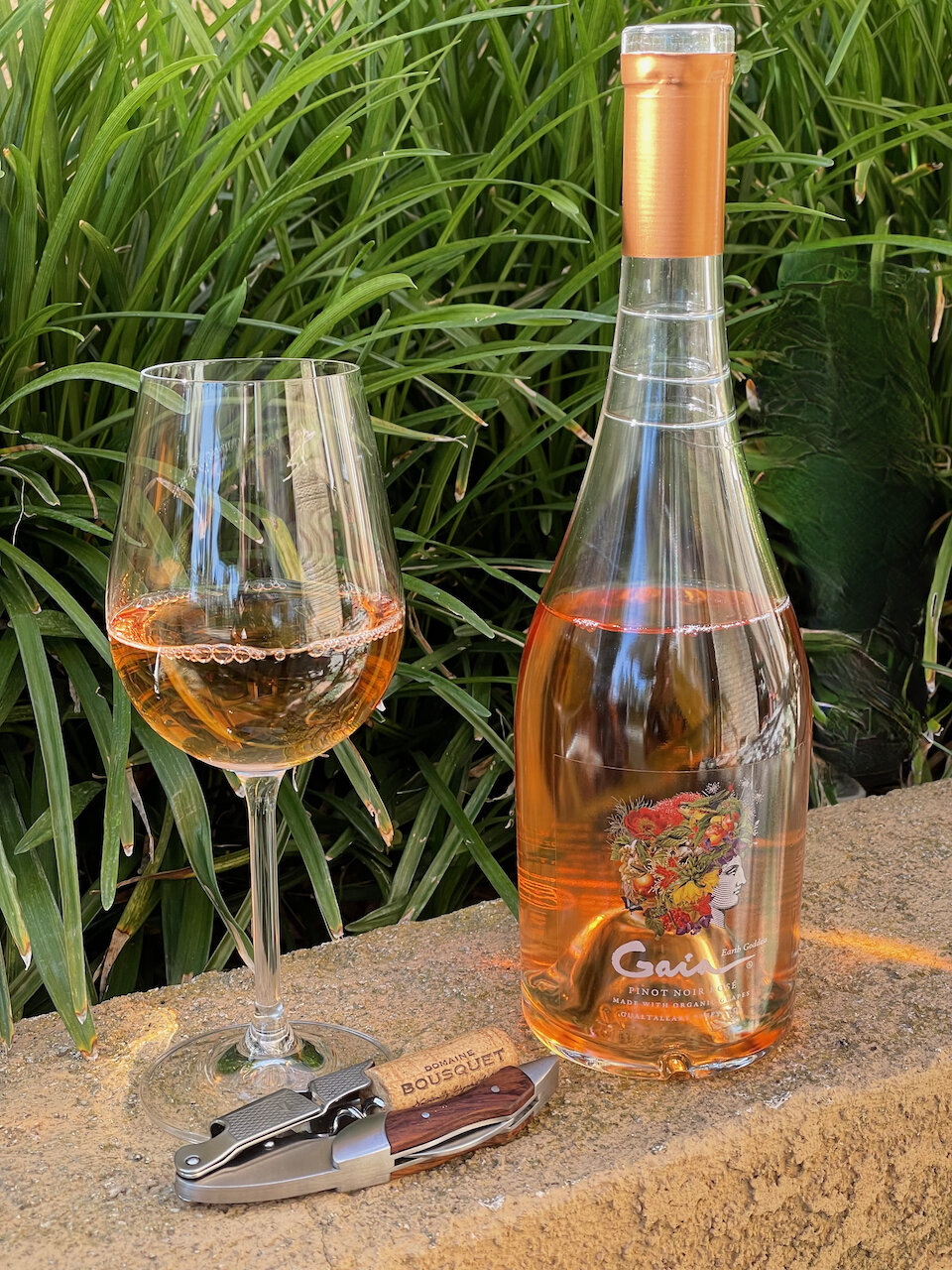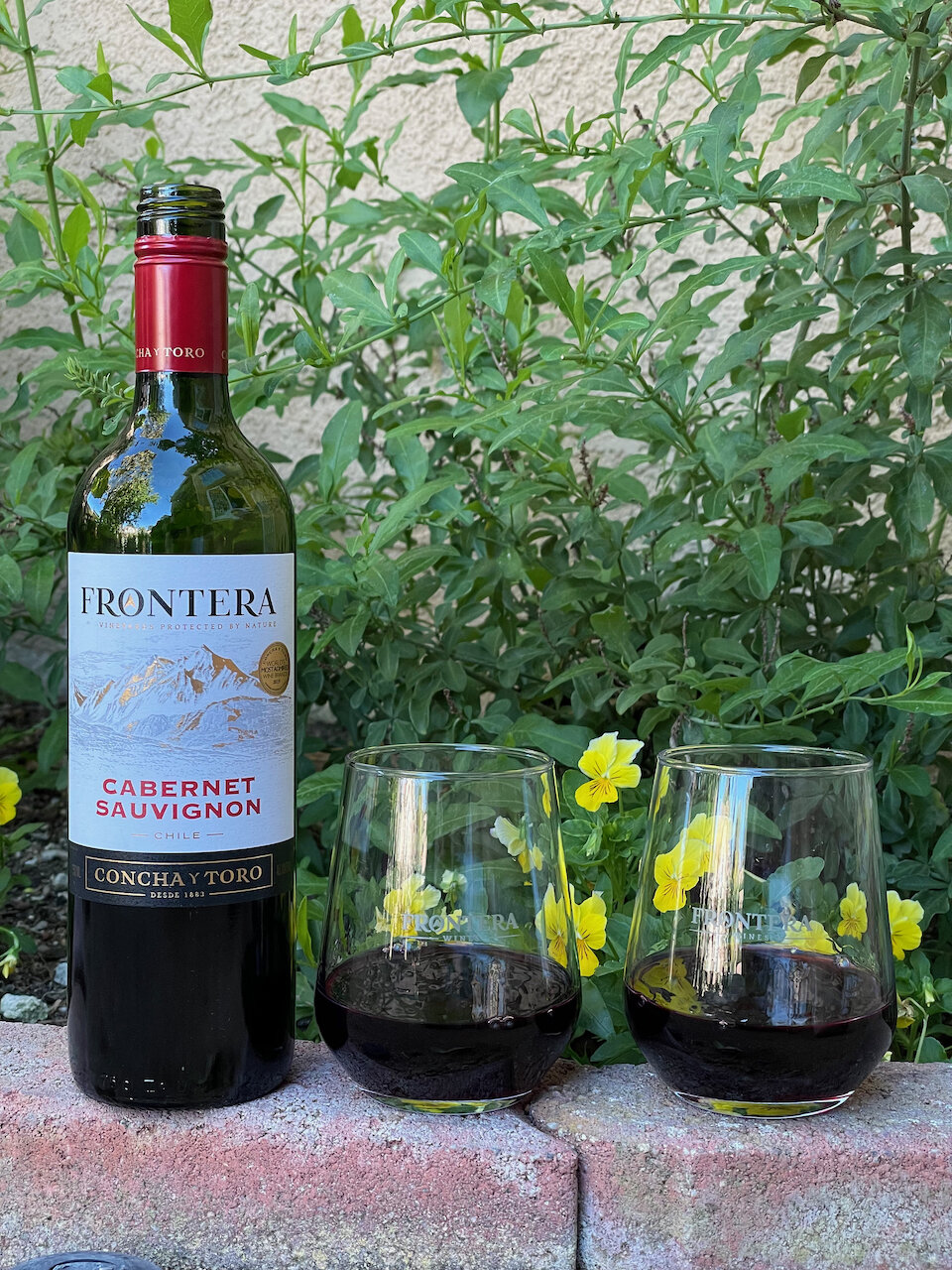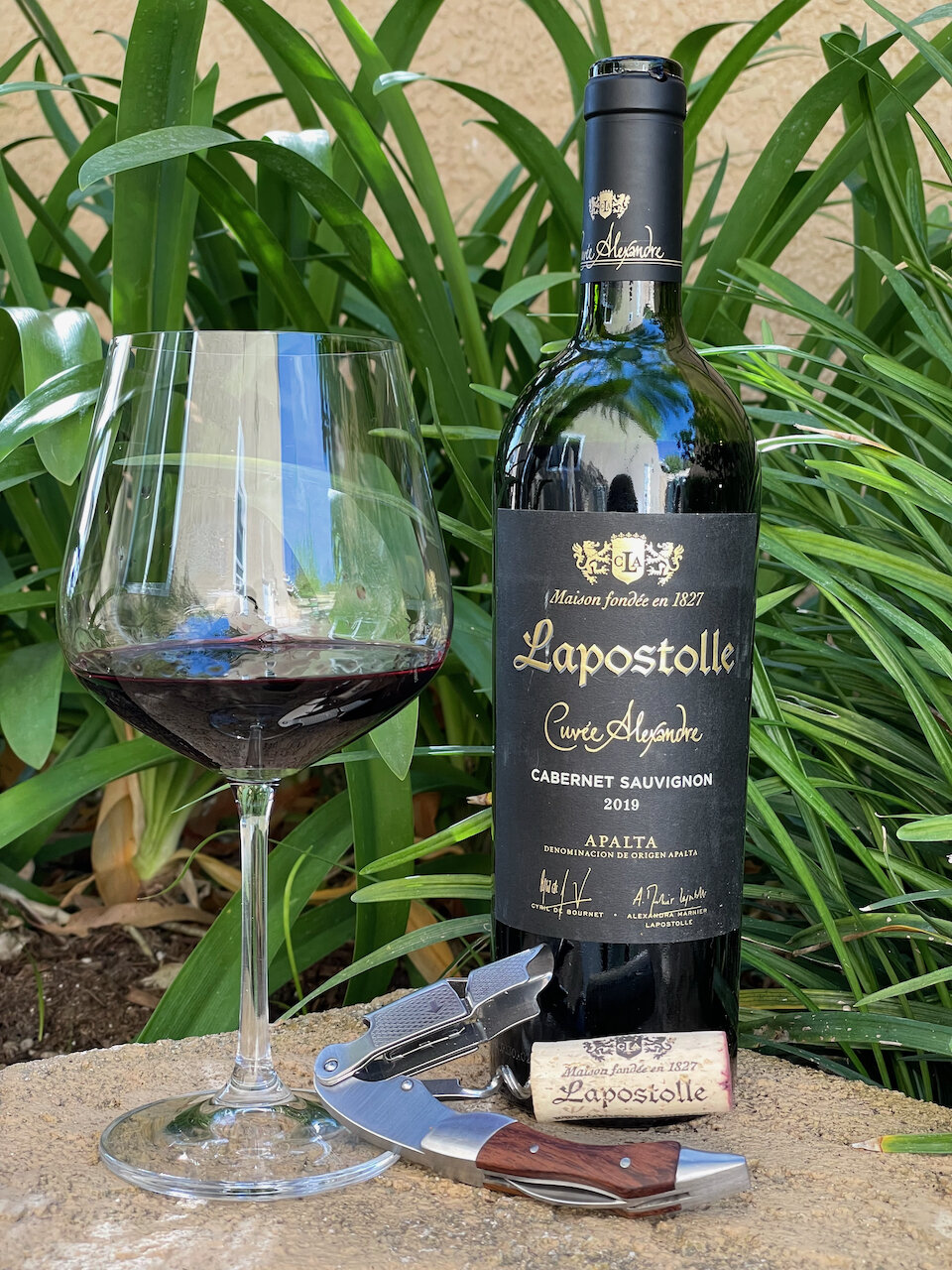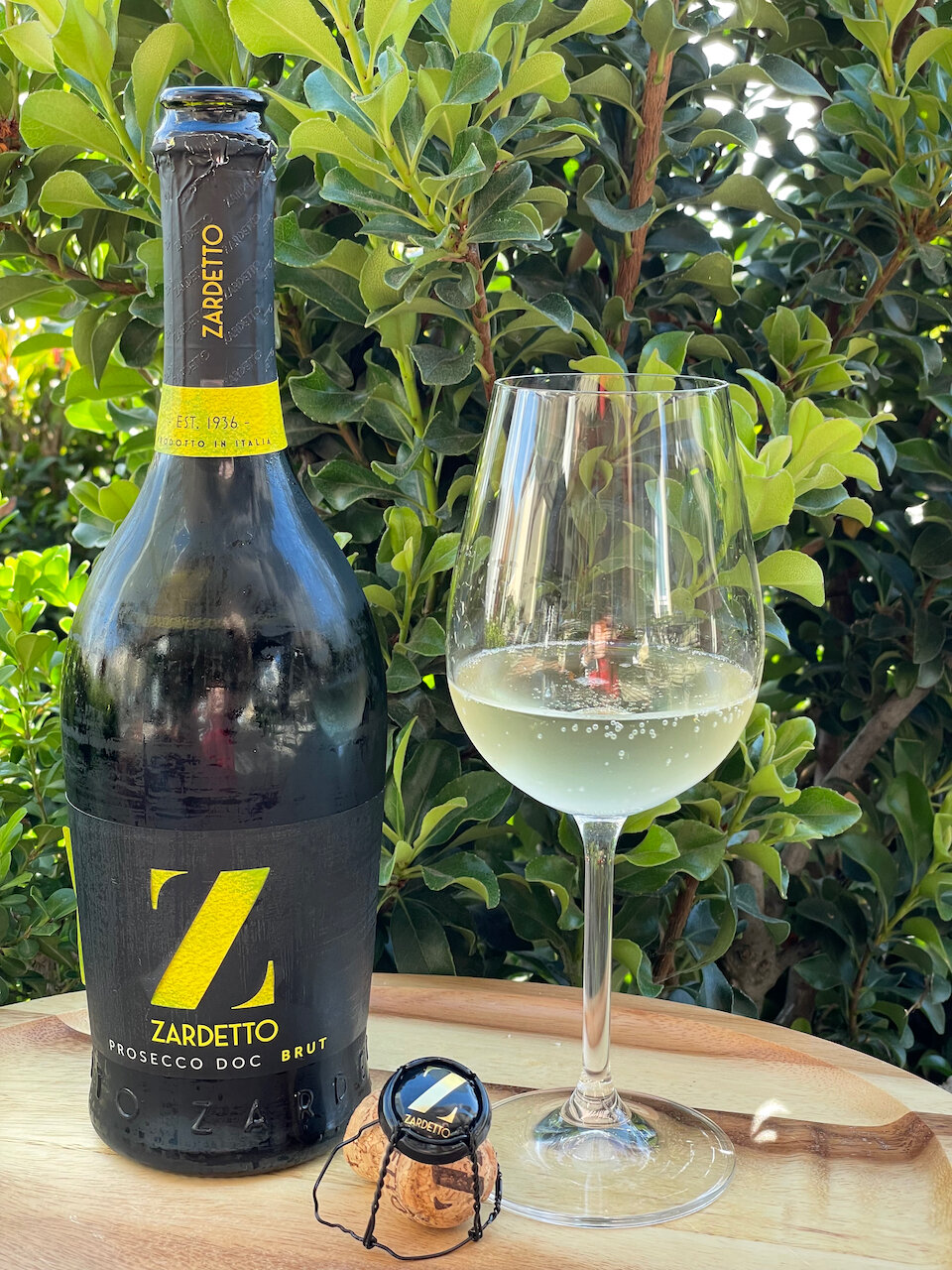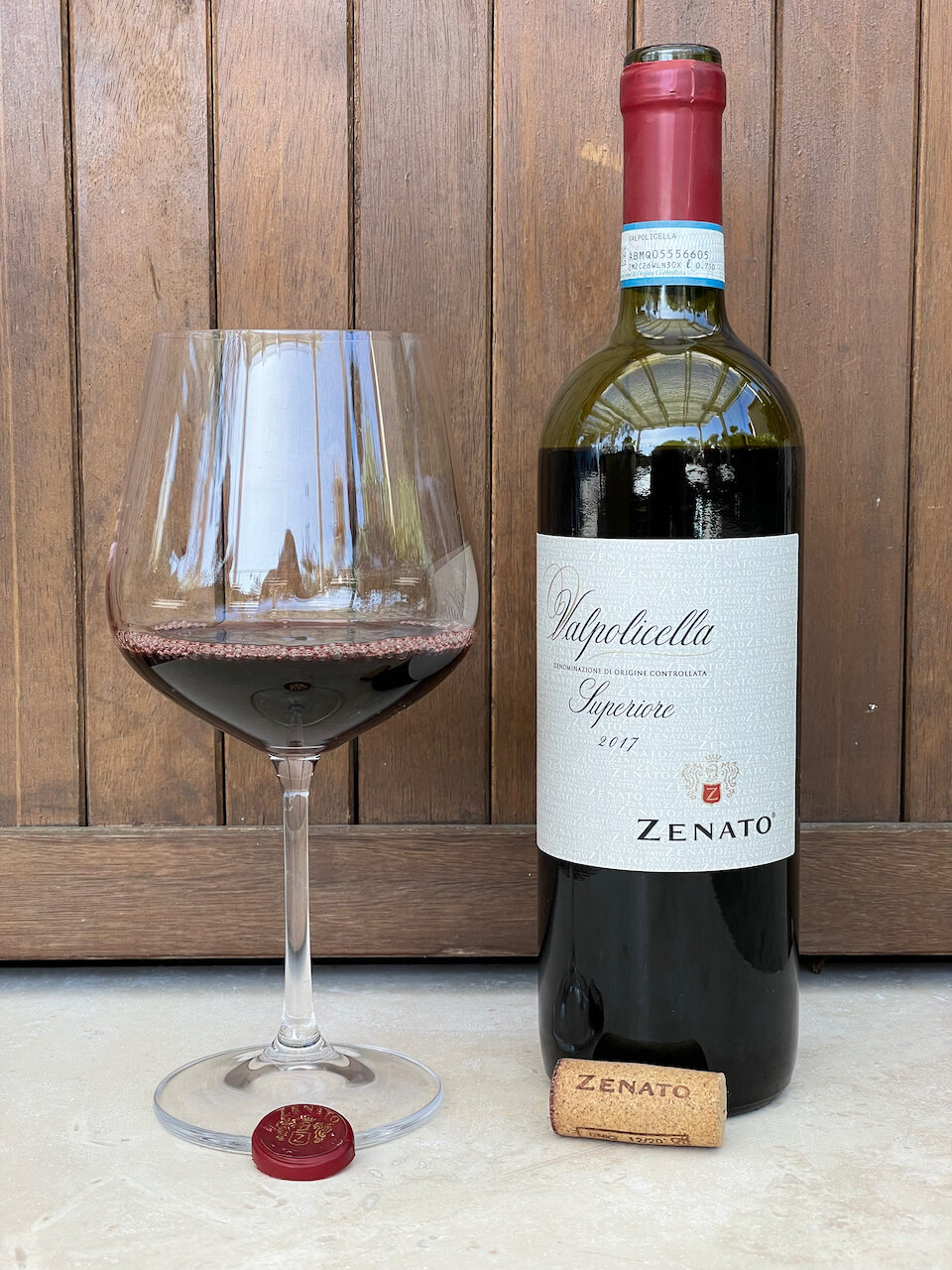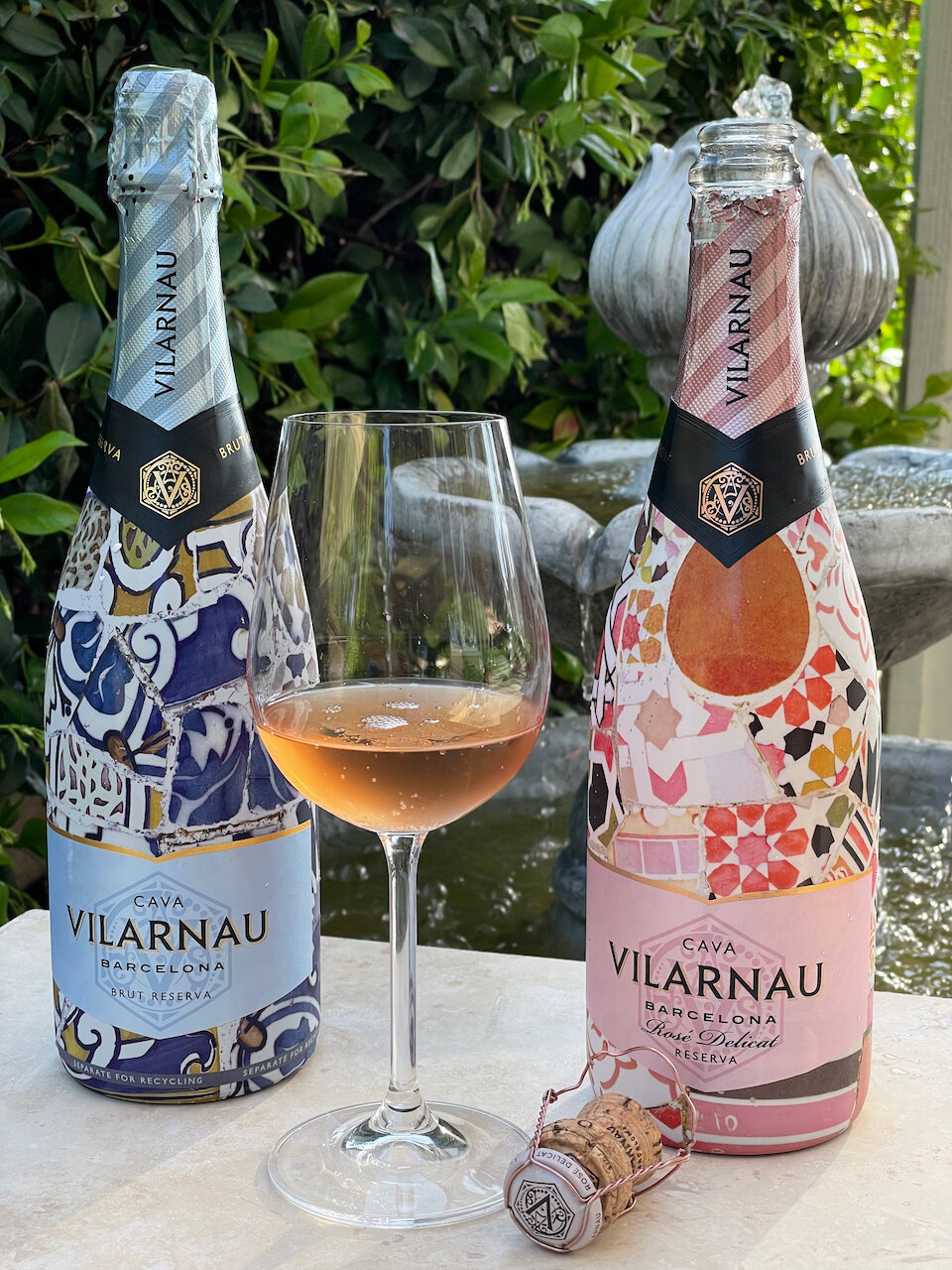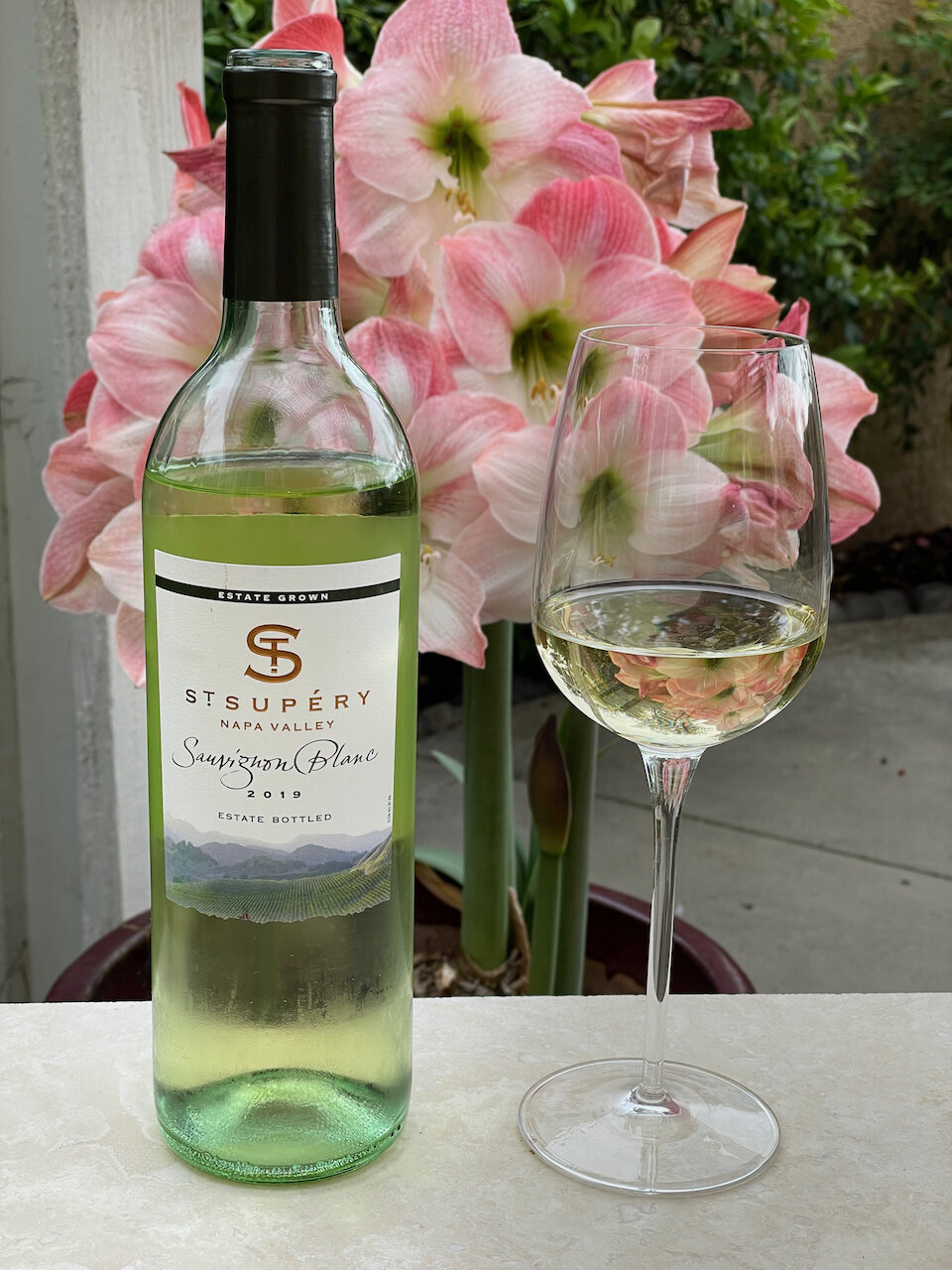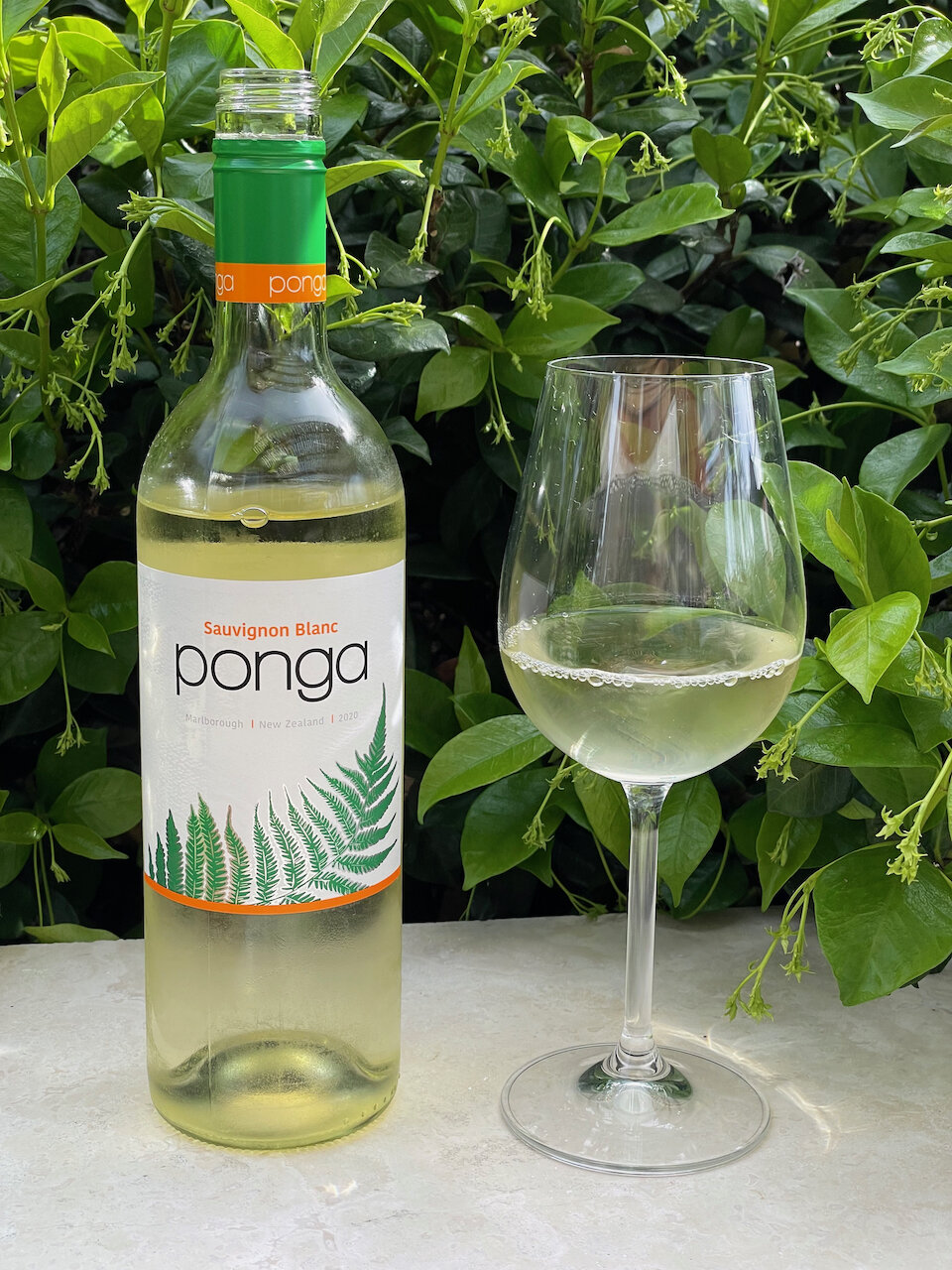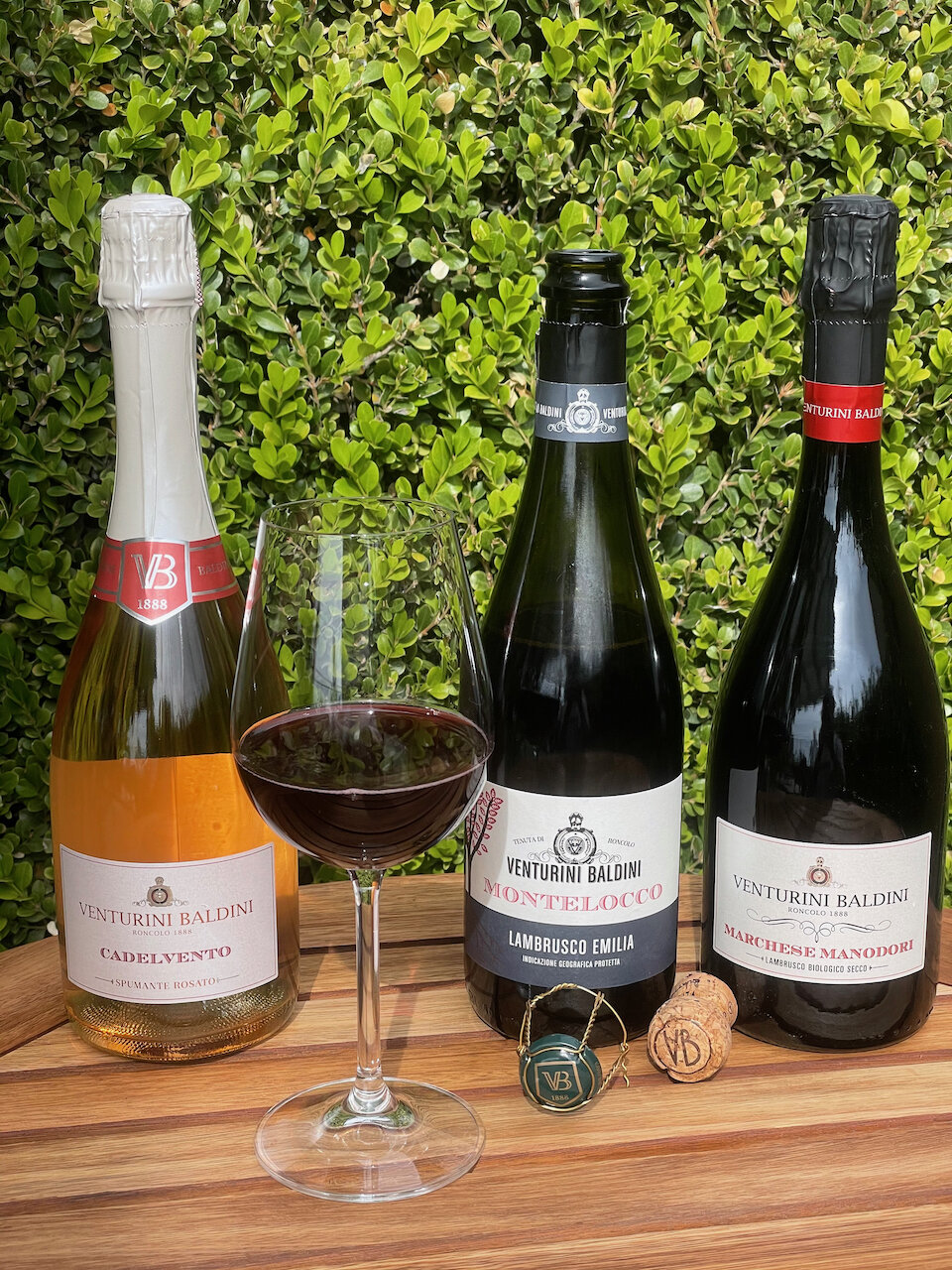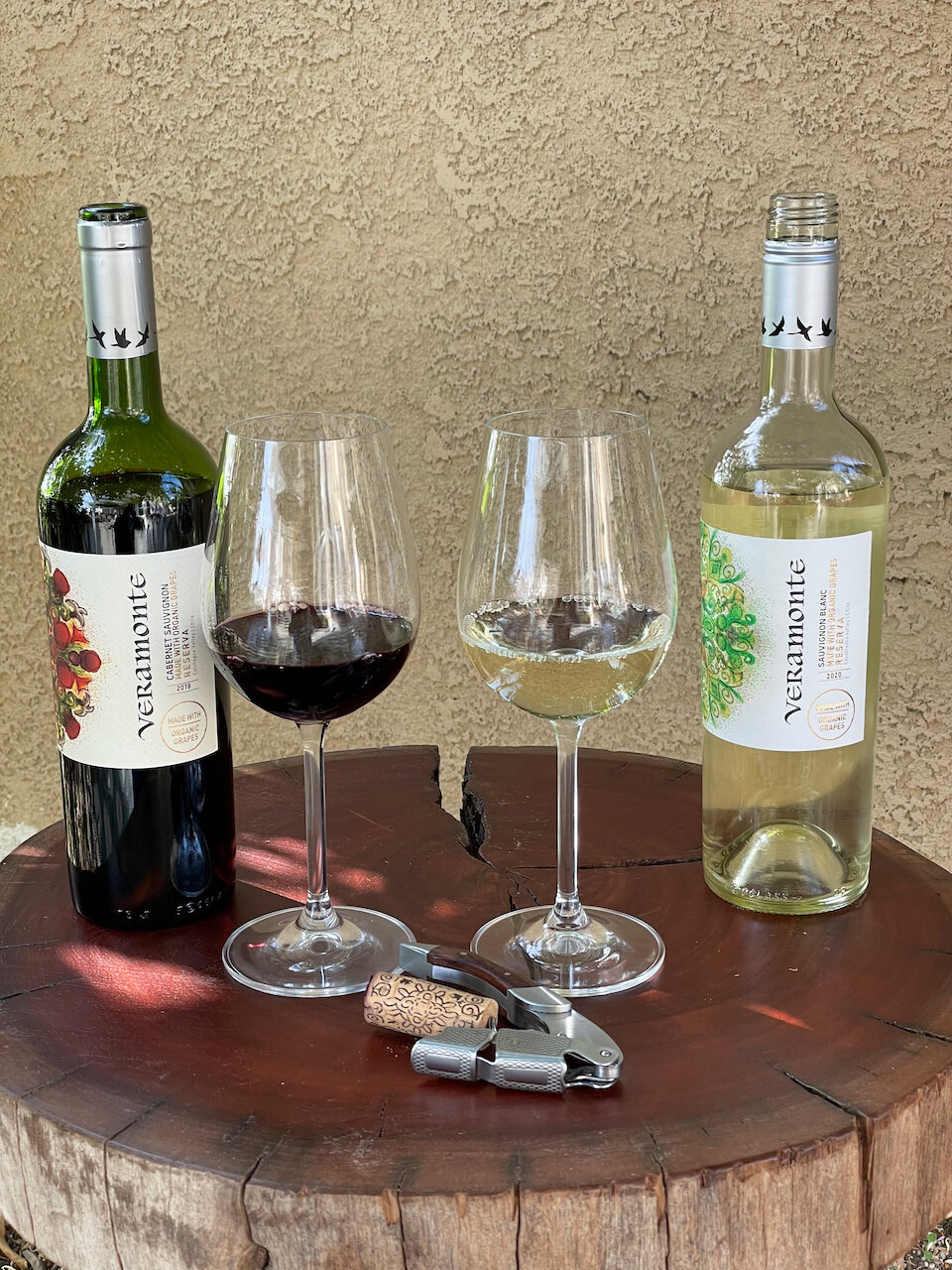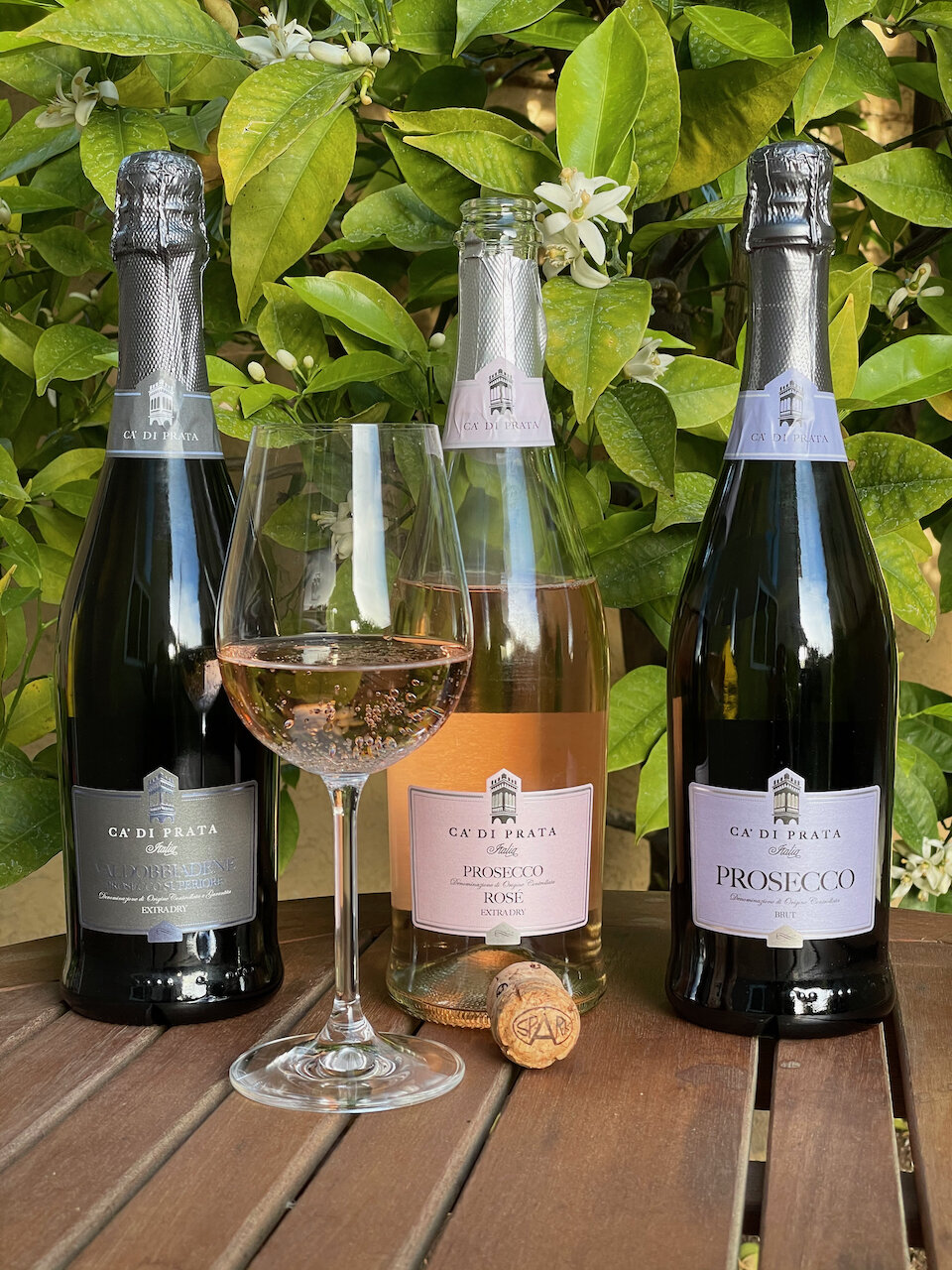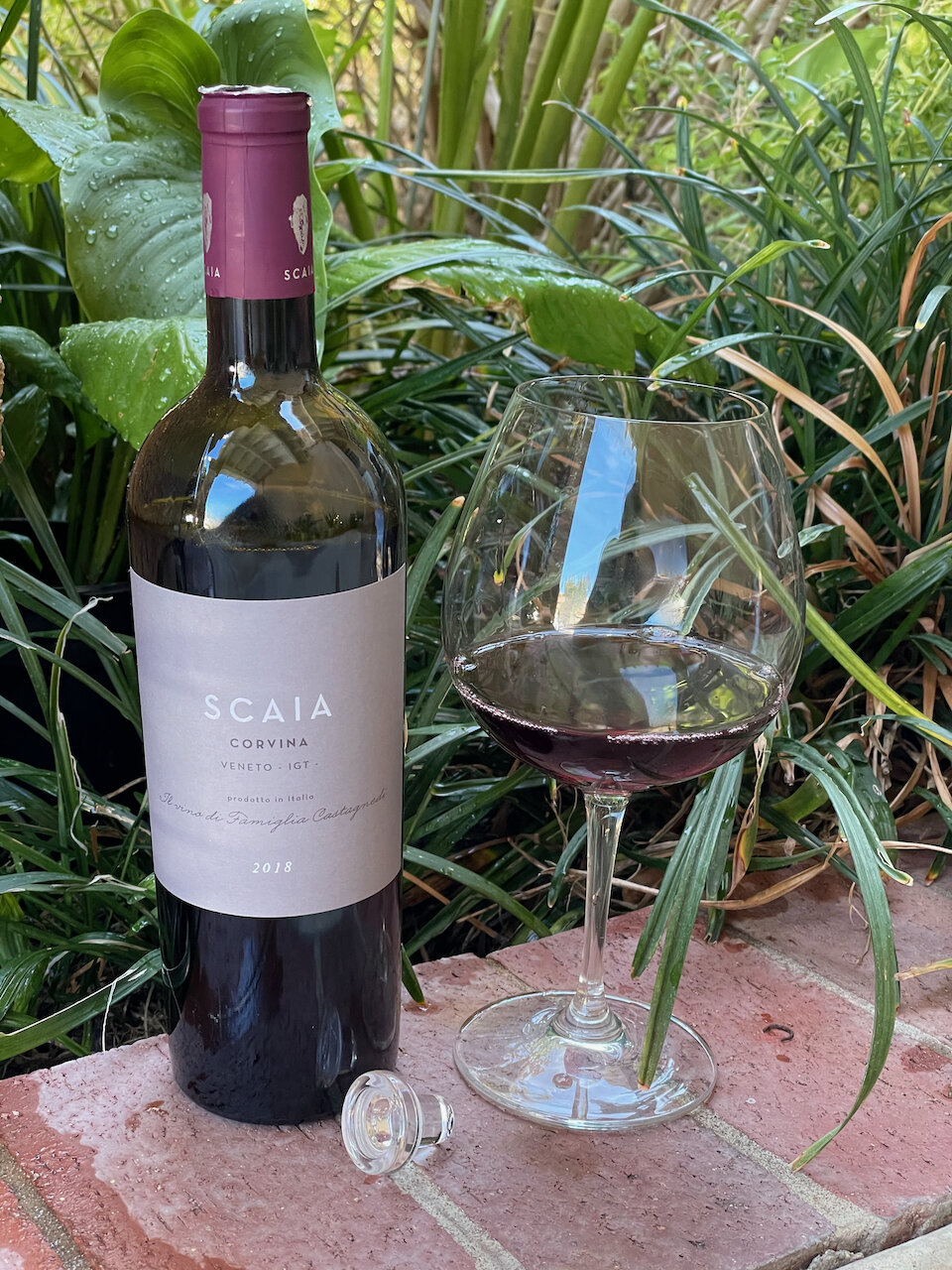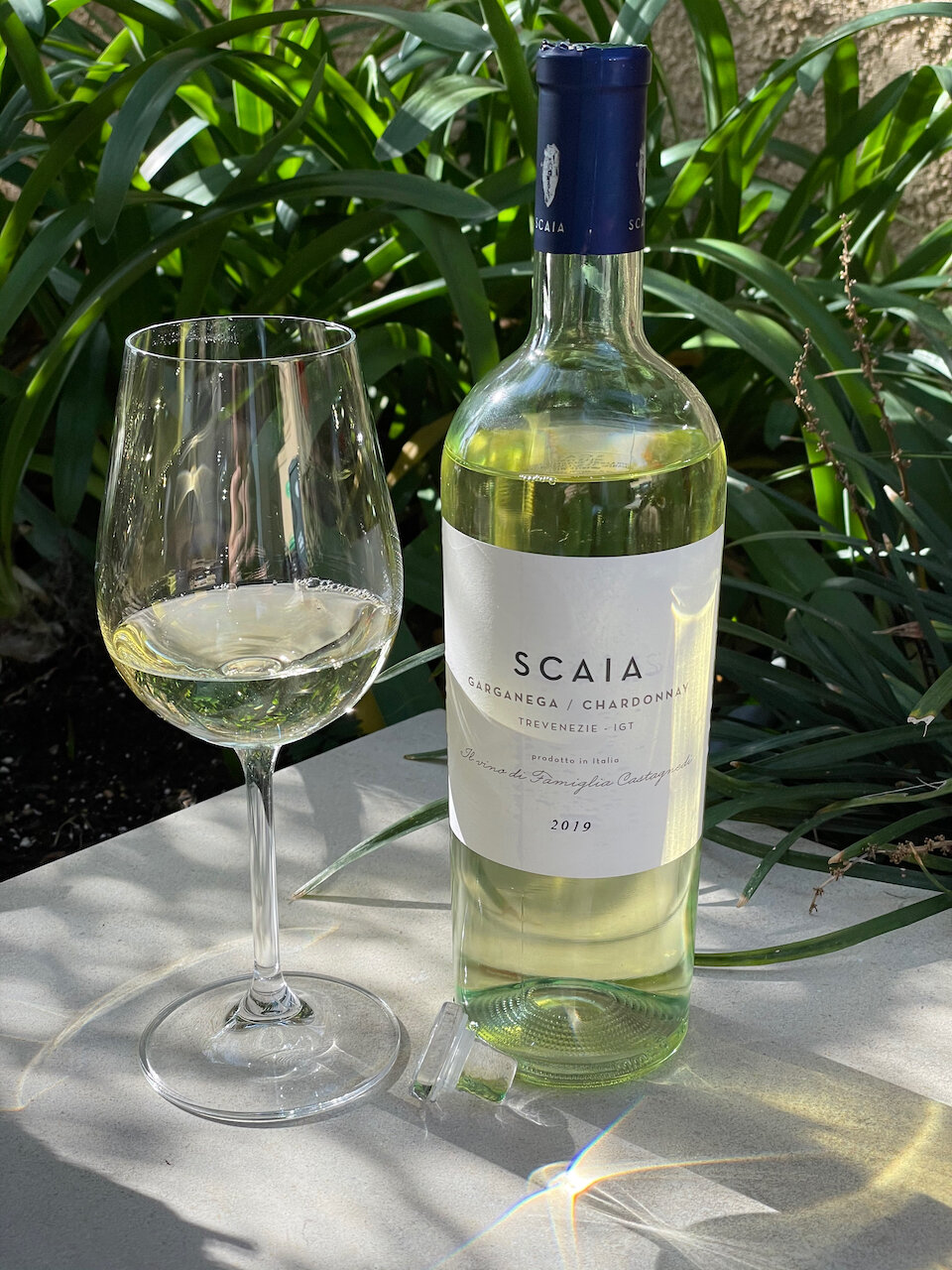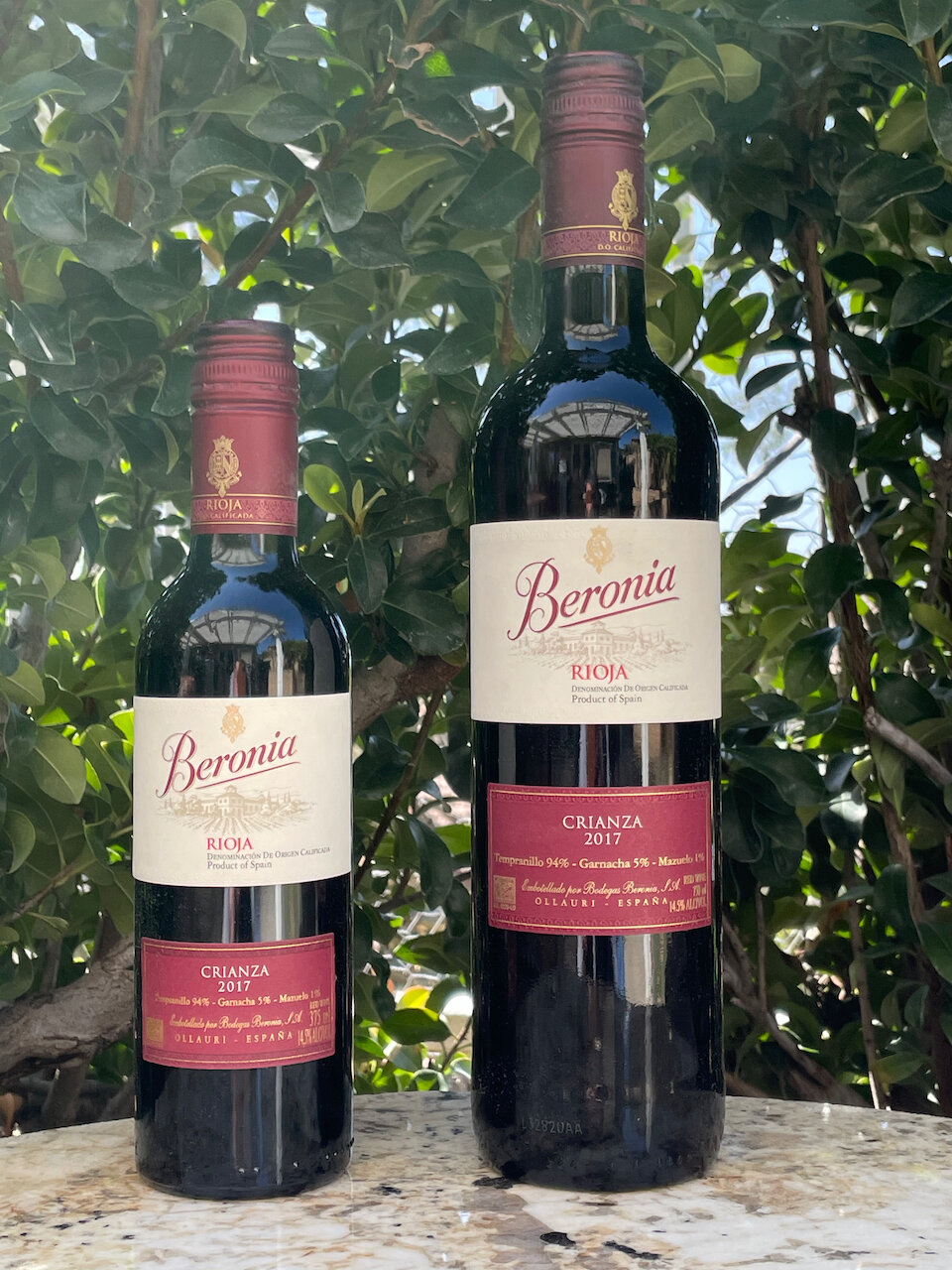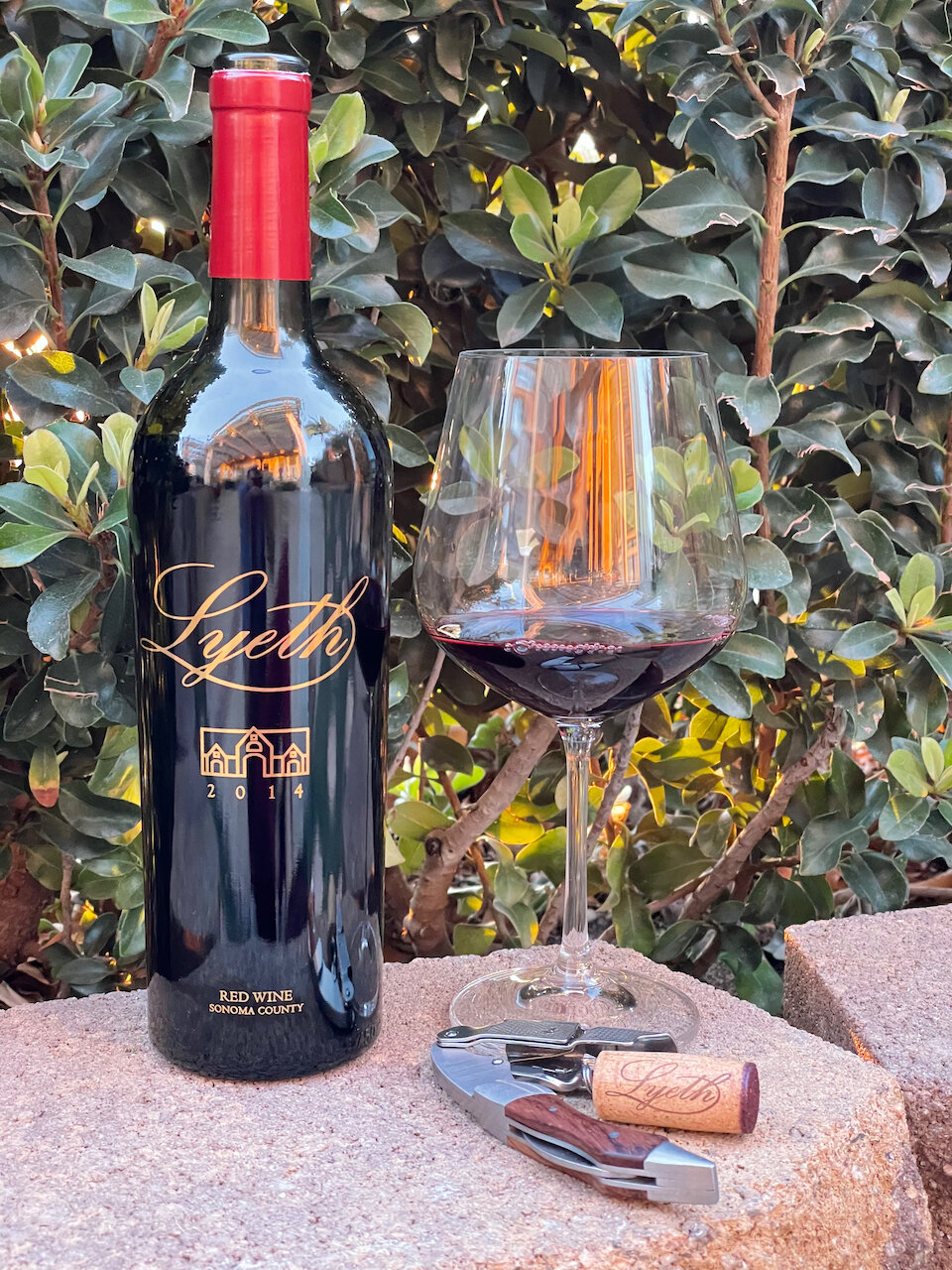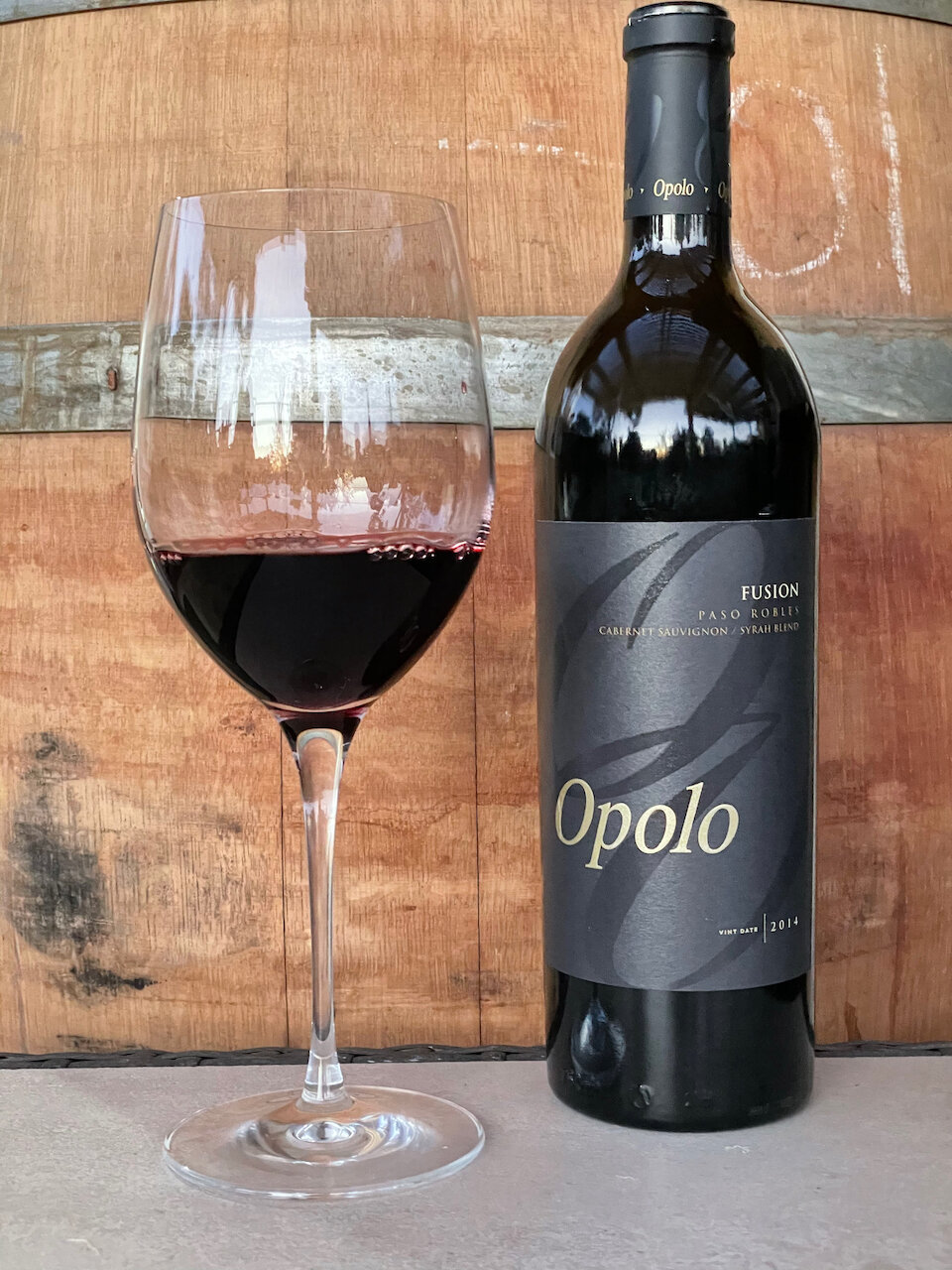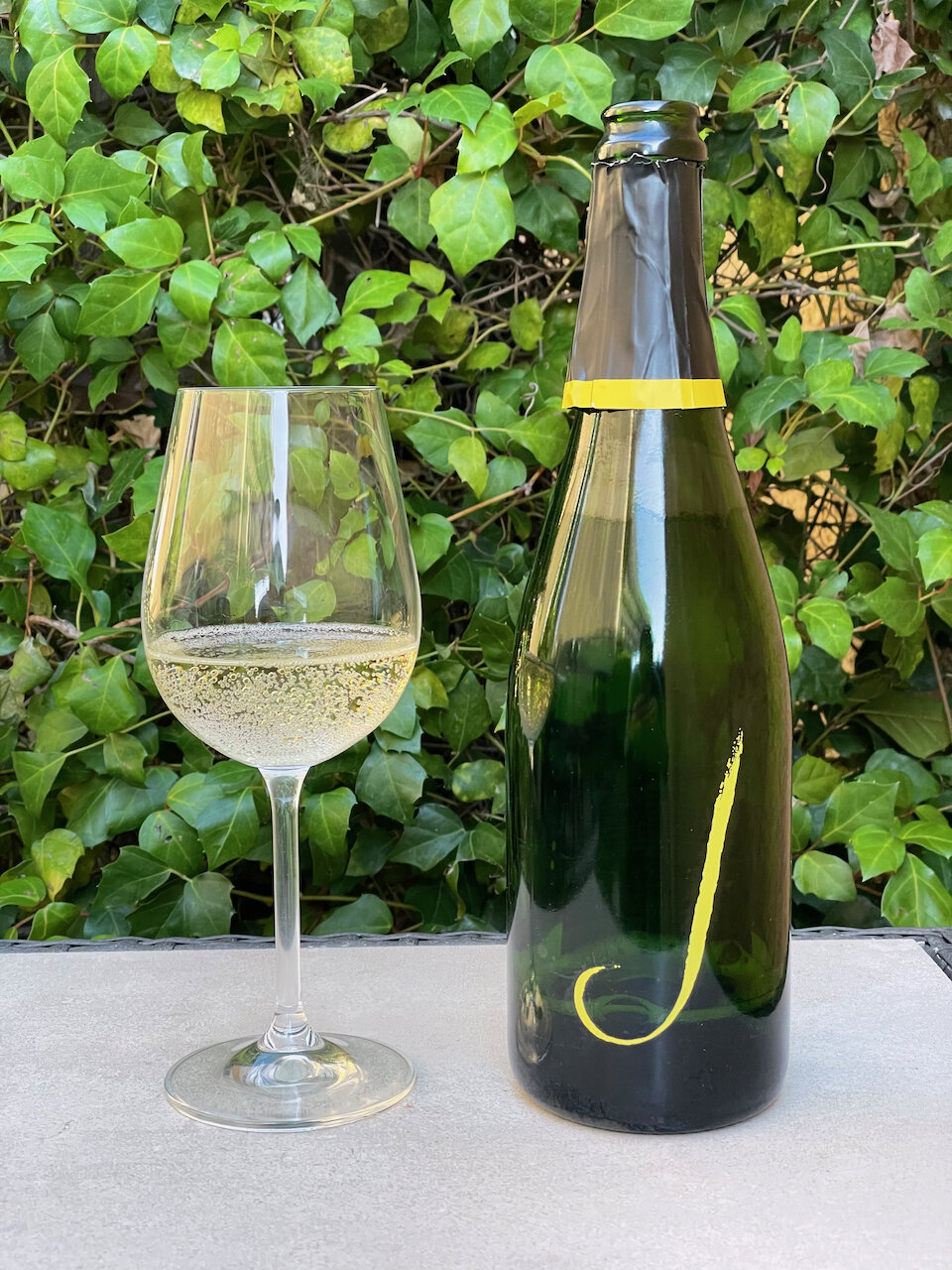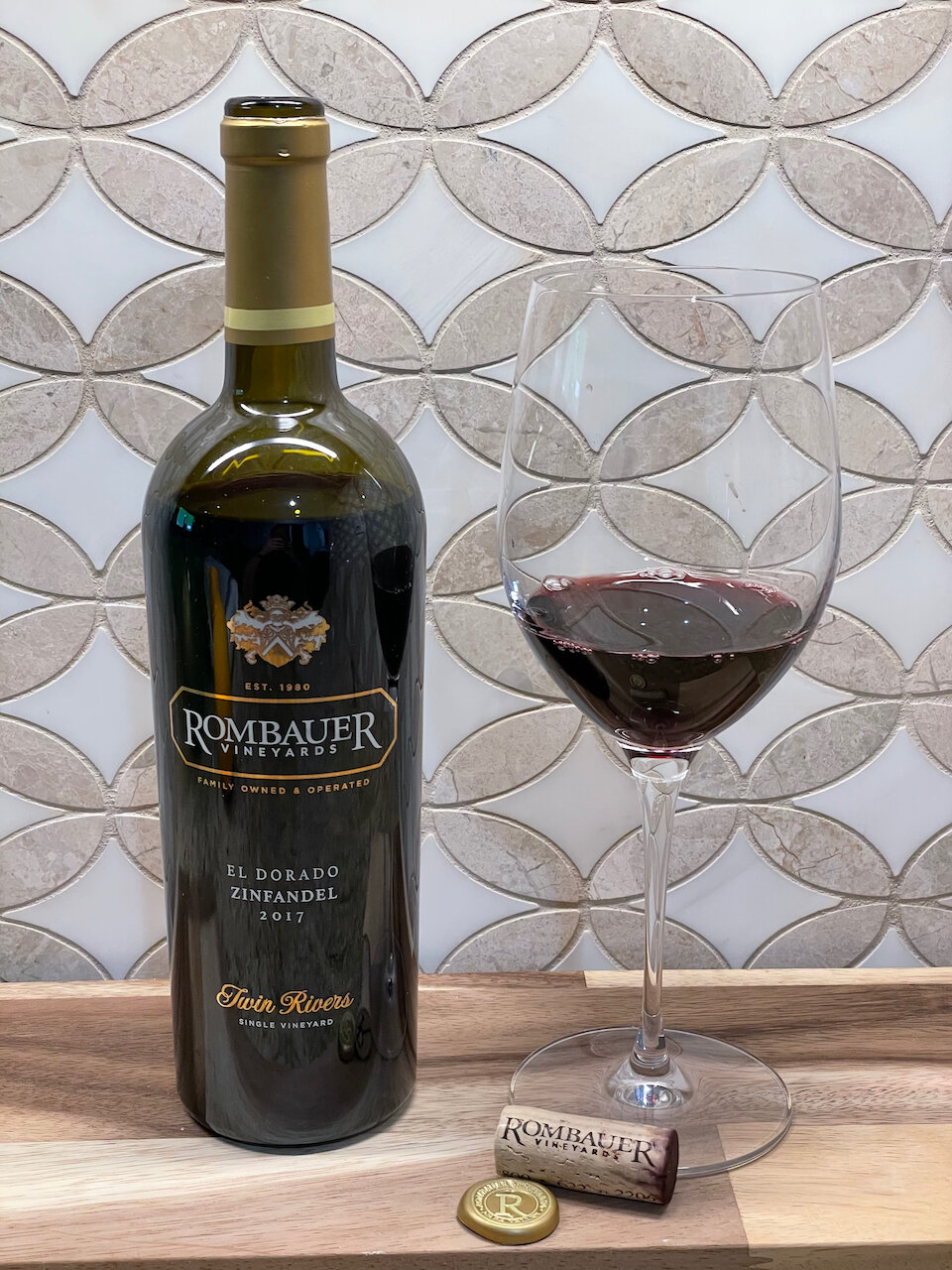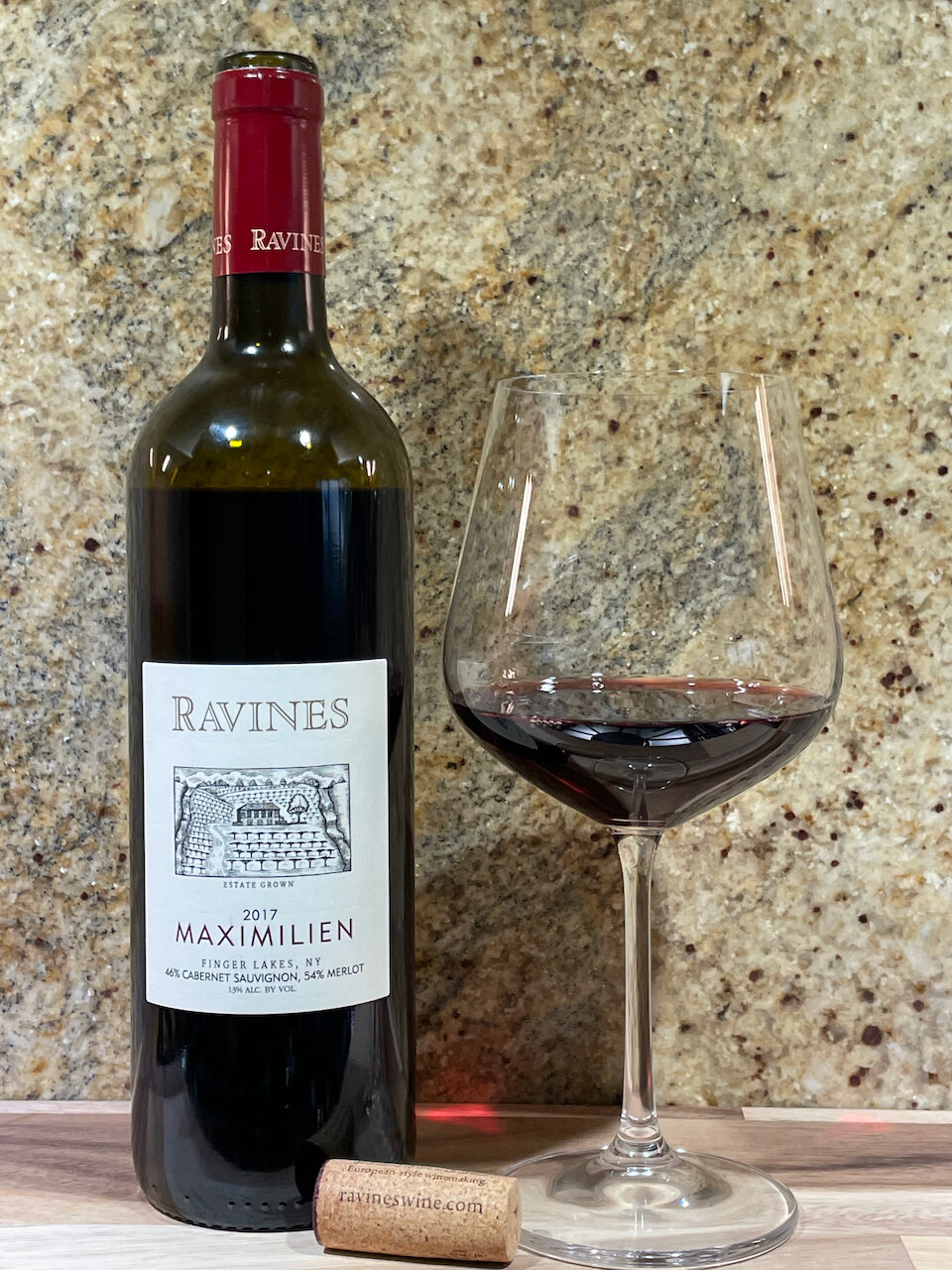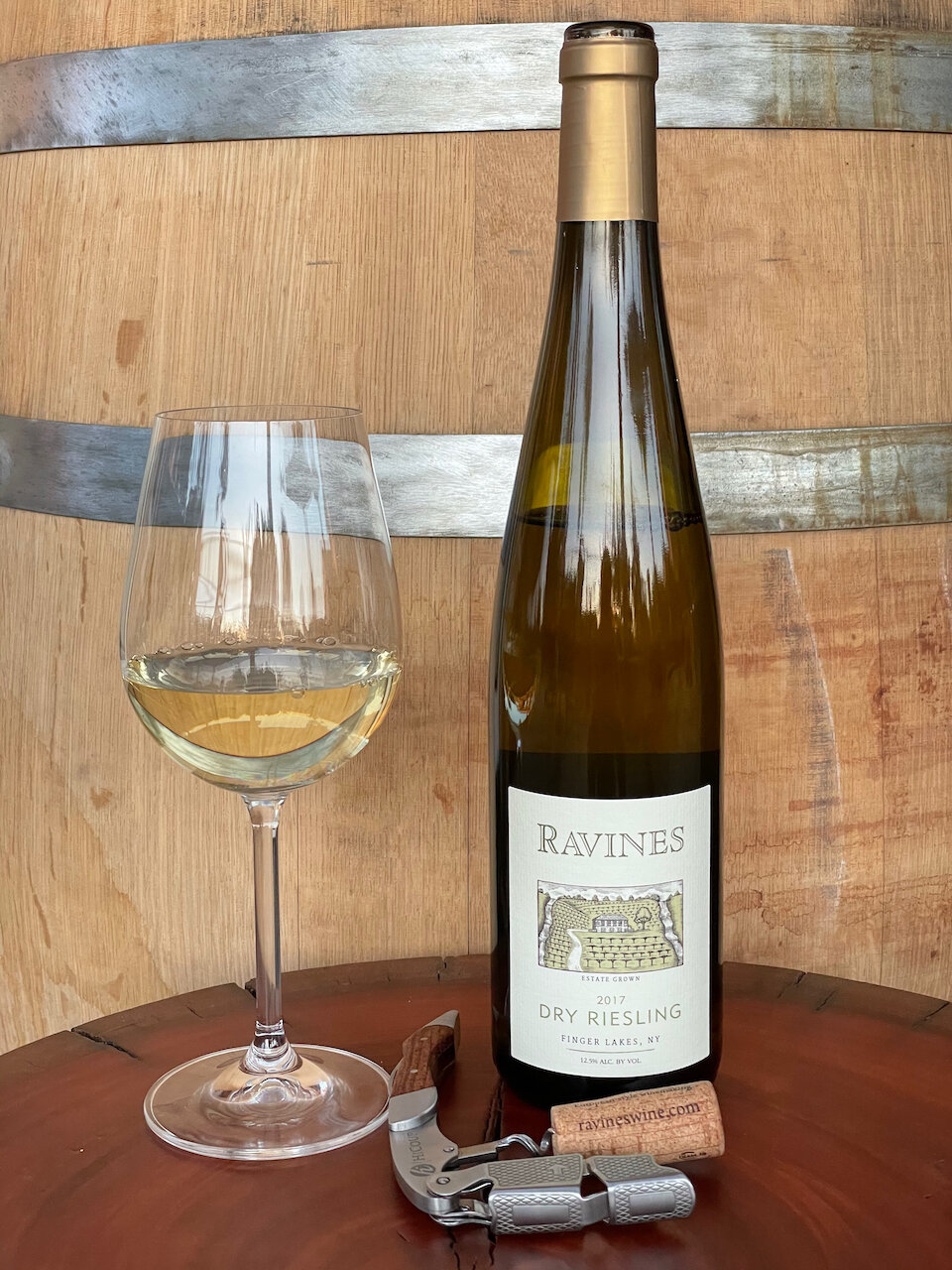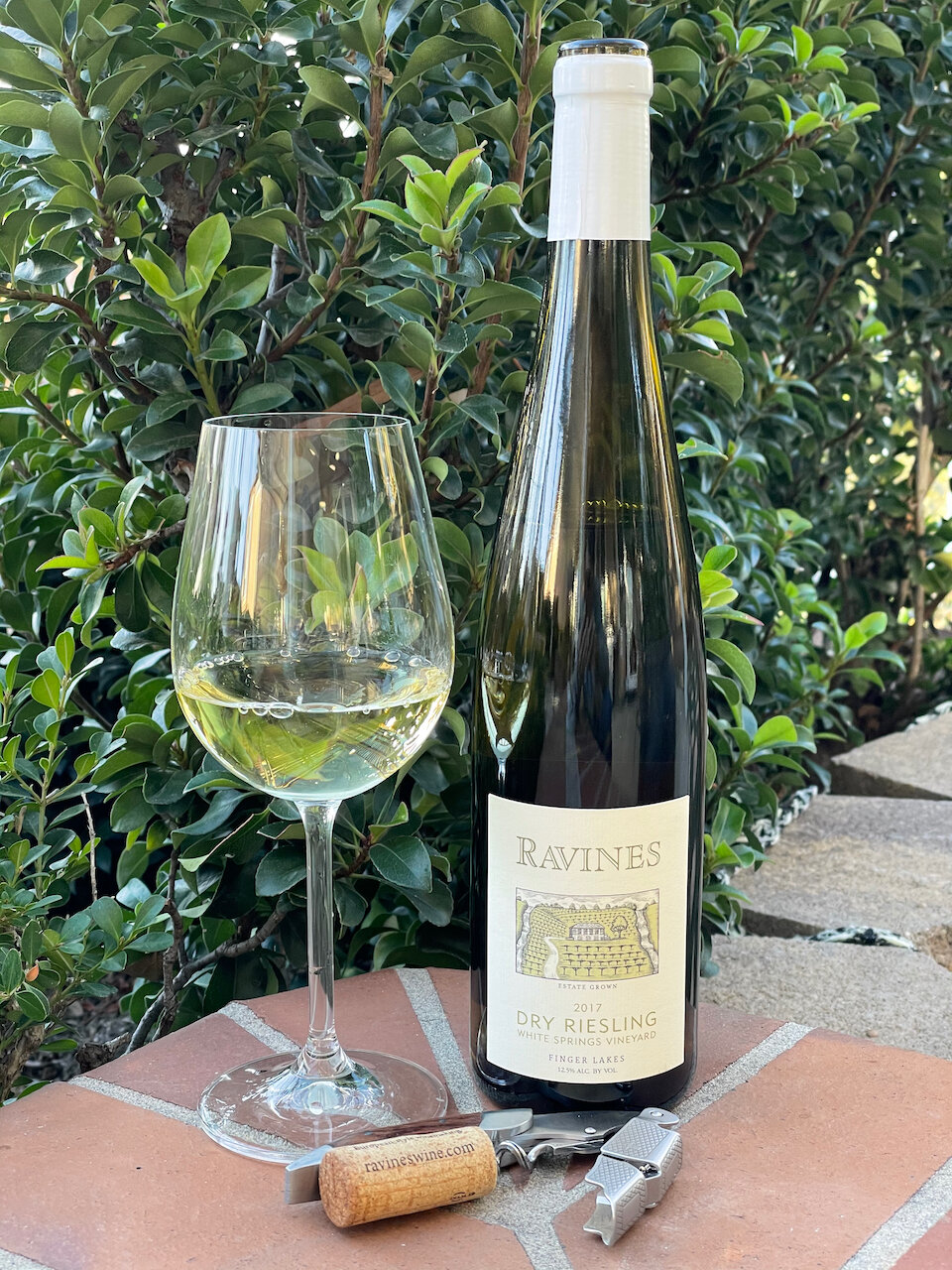2019 Viña Tarapacá Gran Reserva ($20)
Farmed since 1874 in Isla de Maipo, Chile’s traditional vinous heart, this estate is known for its diversity of soils that enable it to successfully grow an array of grapes. This five-grape variety wine (31% Cabernet Franc, 26% Syrah, 22% Carmenere, 11% Merlot and 10% Cabernet Sauvignon) are organically grown. It spent 12 months aging in American and French oak. It has upfront notes of wild herbs, flowers, ripe black fruit along with subtle vegetal notes from the Cabernet Franc and lavender and violet notes from the Merlot.
Sustainability Pillar: Planting more than 11,000 native trees and shrubs to restore the natural environmental balance and reconnect the biological corridors between the Altos de Cantillana mountains and the River Maipo through the estate’s 5,000 acres of vineyards.
2019 Viu Mament Secreto de Viu Manent Malbec ($15)
Family-owned since 1935, Colchagua Valley-based Viu Manent is one of the most respected wineries in Chile. The family has fun with the line of “Secreto” wines – a stated grape variety with a “secret blend” (15%) of other grapes. The Malbec grapes come from 19 year-old vines. Fresh and fruity, the final blend offers a mix of red berries and violets on the palate.
Sustainability Pillar: Installation of four solar plants that generate 460 kilowatts at peak, implementation of a biodiversity protection program as Central Chile is home to more than 50% of the various species of floral and vertebrates in the country, and recycling (such as using old barrels in promotions or by local artists).
Disclosure of Wine Sample Submission: I received these samples at no cost for review. The opinions expressed are entirely my own.
Samples Provided by Creative Palate Communications
2018 Viñedos Emiliana Coyam ($35)
A pioneer in Chile, Emiliana is one of the world’s largest producers of organic and biodynamic wines in the world. Coyam comes from a vineyard on granite-based soils in Colchaga’s coastal mountain range. All the fruit is own-rooted and is a massal (field) selection of different varieties, except for the Syrah, which is a specific clone. Eight different varieties are included in this tasty blend (42% Syrah, 39% Carmenere, 6% Cabernet Sauvignon, 5% Garnacha, 3% Malbec, 3% Carignan, 1% Tempranillo and 1% Mouvedre). This medium-bodied wine has nice black and red fruit flavors, medium tannin and an easy finish. It’s made with organically grown grapes and is Vegan.
Sustainability Pillar: Installation and support for organic gardens in local schools in 50% of the communications Emiliana operates in (goal: 100%). Also has 91 organic vegetable gardens for is employees, with many participating in collective growing to provide healthy food for their families.
2019 Viña Koyle Gran Reserva Carmenere ($17)
Viña Koyle’s (KOO-lay) biodynamic vineyards are planted on the rocky slopes of Los Lingues in Alto Colchagua and are currently tended by the sixth generation of a family that has been making wine since 1885. Thanks to the deep roots of the vines, this Carmenere-based wine (85%) also includes Tempranillo (10%) and Petit Verdot (5%).
This wine has nice red fruit flavors of raspberry and cherry, medium tannin and nice finish.
It’s biodynamic, Non-GMO, Organic Agriculture and Vegan.
Sustainability Pillar: Demeter-certified, biodynamic producer Koyle also has installed solar panels which harvest 40% of the energy used.
Disclosure of Wine Sample Submission: I received these samples at no cost for review. The opinions expressed are entirely my own.
Samples Provided by Creative Palate Communications
Viña Marquis Marquis Gran Reserva Cabernet Franc 2018/SRP $24
Owned by the Hurtado family for four generations, the winery sits between two rivers in the Colchagua Valley. The two waterways not only moderate temperatures and protect the vineyards from spring frosts, but also provide the 6.5-foot layer of concentrated clay set over gravel. These well-drained soils enable grapes to lose their green characteristics early in the season. The long cool 2018 growing season yielded a wine that is vibrantly fresh, featuring a basket of red and black fruit flavors in the mouth, along with floral touches and a dark tobacco background.
Sustainability Pillar: Electrical consumption has been reduced by 30% and liquified gas requirements by 90% thanks to an energy recovery system using geothermal heat pump technology that was awarded the 2013 British Chilean Chamber of Commerce Innovation Prize.
Concha y Toro Gran Reserva Serie Ribeiras Cabernet Sauvignon, 2019 / SRP $17
In 2021, powerhouse Concha y Toro received B Corporation Certification, which recognizes companies around the world that meet the highest standards of environmental management, governance and social performance. The Serie Ribeiras line of wines are single vineyard wines offered at super competitive prices. Fruit for this wine comes from the Palo Santo Vineyard, D.O. Marchigüe, Colchagua Valley, on the banks of the Tinguiririca River. The unctuous wine, aged in French oak and foudres, is 94.5% Cabernet Sauvignon, with Syrah and Carmenere rounding out the blend.
Sustainability Pillar: B Corporation-certified with metrics including: 100% drip irrigation, 97% of waste reused/ recycled, 24% reduction of waste over 2018, 83% of energy comes from renewable sources.
Carbon Footprint has also been a focus for Concha y Toro, who have been working with international scientific organizations, to develop a detailed roadmap, which identifies costs and pegs them to reduction levels and targets. This methodology has been shared with Wines of Chile and in June 2021 several companies will sign a document in to commit to specific reductions – a first in the wine world.
Disclosure of Wine Sample Submission: I received these samples at no cost for review. The opinions expressed are entirely my own.
Samples Provided by Creative Palate Communications
2019 Sosie Rossi Ranch Sonoma Valley Red Blend ($43)
For Sosie, France has always shaped their appreciation of wine. It has influenced the way their vineyards are farmed and in the way they treat the fruit in the cellar. They proclaim this affinity with France with their label and their name “Sosie” which in French means ‘twin’ or ‘spitting image.’
In the French tradition of the Rhone Valley, Sosie produces this blend with 51% Grenache, 34% Mouvèdre and 15% Syrah, all from the same certified organic vineyard. However, their wine isn’t just a blend, it’s co-fermented, with all the fruit picked on the same day and the percentages decided then and there. This approach can be a big risk, but it can also yield big rewards.
This Sosie Rhone blend did indeed yield a big reward. While only 10 barrels were produced, I bet they wish they’d made a lot more! The production began with 19 days of skin contact, fermentation in stainless steel tanks and then got the benefit of 15 months of aging in neutral oak.
This GSM Rhone blend is medium ruby in color with dark cherry, lavender, clove and anise aromas. On the palate it’s dusty dry with very moderate tannin, great richness and complexity, flavors of blackberry and plum, and a balanced finish with just the right touch of acidity.
This Sosie Rossie Ranch Red Blend is vegan friendly, organically farmed and fermented with native yeast. With just 10 barrels being produced you may want to get your hands on this one quickly through a direct order from their website. Cheers!
Disclosure of Wine Sample Submission: I received this sample at no cost for review. The opinions expressed are entirely my own.
Sample Provided by:
Michelle Keene | Account Director
CALHOUN & COMPANY COMMUNICATIONS
Dow’s 10 & 20 Year Tawny Port
Looking for the perfect nightcap after a long day? During these long, warm days of Summer, sipping Dow’s 10 Year Old Tawny Port (or Dow’s 20 Year Old Tawny Port is the hidden gem of a summer night.
These Port wines are from one of the leading port producers in Portugal. Dow’s is managed by fourth and fifth generation family members of the Symington Family Estates in Portugal.
These wonderful Ports are ready-to-drink and the culmination of over 100 years of experience creating these wines through decades of aging in seasoned oak casks.
From two of the Douro’s finest Quintas: Senhora da Ribeira and Bomfim, these ports are the product of the best hand-harvested vineyards, which have both supplied Dow’s for over a century. Grapes used in the production of port include Touriga Nacional, Touriga Franca, Tinta Barroca, Sousão, and Alicante Bouschet.
These 10 and 20 Year Old Ports are the result of a skillful process that balances the original fine fruit flavors with wood-character.
Dow’s Ten Years Old Tawny Port ($39) [92 points - Wine Spectator, 2018]
This Port has a deep russet-colored center that fades to the distinctive garnet edge. On the nose it has bright aromas of red cherry and almonds coupled with toffee and vanilla notes. On the palate this 10 Year Port is mouth-filling, with peppery spice and a touch of marmalade preceding a full finish that includes almond-overtones from the prolonged cask aging.
Dow’s Twenty Years Old Tawny Port ($67) [93 points -Wine Spectator, 2018]
For many, this is the perfect age for a great Tawny Port. After 20 years in seasoned oak casks this Port has become a delicate golden-amber color. It has aromas of honeysuckle and a distinct butterscotch scent.
On the palate, Dow’s Twenty Years Old Tawny is perfectly balanced, with notes of dried nuts and spice, concentrated red berry fruit and a mineral freshness. Nuanced flavors of tobacco lead to a focused, long dry finish.
These are very fine Ports that should be enjoyed in a standard wine so that the aromas and color can be appreciated. Serve slightly chilled in warm weather.
Disclosure of Wine Sample Submission: I received these samples at no cost for review. The opinions expressed are entirely my own.
Samples Provided by:
Michelle Keene | Account Director
CALHOUN & COMPANY COMMUNICATIONS
2020 Loess Grüner Veltliner by Domäne Wachau - 1L ($14)
This Loess Grüner Veltliner (‘grew-ner felt-lee-ner’) from Domäne Wachau comes from small vineyard plots along the Danube riverbed in Austria. Loess (‘low-ss’) refers to the soil found in these vineyards that reflect wines that are slightly fresher and fruiter when compared to the wines produced from the gneiss (‘nice’) soils found in the steeper Wachau Valley vineyard slopes.
This wine is produced from hand-picked grapes that are certified Sustainable and Vegan.
This Grüner Veltliner is pale yellow in color with a delicate aroma of yellow apple and pear. On the palate this wine is medium-bodied with the typical tart acidity and white pepper notes (‘Pfefferl’) that end with a refreshing finish.
This Loess Grüner Veltliner is best enjoyed young, preferably in the first year. Well chilled at around 45 degrees F, it is an excellent wine, pure or as “G'spritzter” (mixed with sparkling water). This wine pairs well with the traditional Austrian cuisine such as deep-fried dishes like their famous “Wiener Schnitzel.”
And, with this 1 liter bottle, you’ll get to enjoy up to seven glass of this wonderfully refreshing wine! Cheers!
Domäne Wachau wines are imported by Gonzalez Byass USA.
Disclosure of Wine Sample Submission: I received this sample at no cost for review. The opinions expressed are entirely my own.
Samples Provided by Donna White Communications
Wines of Portugal’s Alentejo Region
Dollar for dollar it’s hard to beat Portugal’s Alentejo region for exceptional values. With 2,000 years of winemaking experience, Alentejo delivers expertly made wines at unbeatable prices.
Alentejo is internationally recognized for its award-winning sustainability program - the Wines of Alentejo Sustainability Program (WASP). Their intent is to support the improvement of the environmental, as well as the social and economic performance of the region's winemaking activities while promoting the recognition of the sustainability performance of the region's wines. WASP members account for nearly 50% of Alentejo’s vineyard area and all Alentejo’s main players participate, including the wineries featured here.
2018 CARMIM Monsaraz Reserva Red ($16)
The vineyards surrounding the historic village of Monsaraz have been farmed since the Middle Ages. Today, the Cooperativa Agricola de Reguengos de Monsaraz (founded in 1971) is not only the largest winery in Alentejo but one of its most awarded. This blend of Alicante Bouschet (60%), Trincadeira (20%) and Touriga Nacional (20%) was aged for 12 months in French and American oak. This wine is garnet-colored with an aroma of ripe blackberries and plums. On the palate it is full-bodied with minerality with a long pleasant finish.
2018 Cartuxa EA Red ($9)
Évora Alentejo (EA) is the capital that includes this winery founded by Carthusian monks. Today, the winery is run by a local philanthropic foundation. Proceeds go toward the preservation of historic Évora, along with the promotion of local arts and culture. Produced from a blend of Aragonez, Trincadeira, Alcante Bouschet and Syrah, this wine is ruby red in color with hints of red fruit aroma. On the palate it has soft flavors that are so typical of the varieties of the Alentejo Region.
2020 Casa Relvas Herdade São Miguel Rosé ($15)
This rosé gets its distinctive tropical fruit and red berries flavors from the blend of Touriga Nacional, Syrah, and Aragonez, among others. The producer is recognized for making wines that combine native and international varieties, and adding their own uniqueness, such as the “Sur Lie” aging for this delicate refreshing rosé.
2019 Herdade do Rocim Amphora Tinto ($18)
Production of this wine was done in the traditional way, in Amphora clay pots, with no temperature control. The ancestral way to make such wine was fully respected. Fermentation took place using indigenous yeasts and with no addition or correction to the must. It was then aged for three months in the bottle. The wine is clear and shiny color. On the nose, you’ll get black cherry, raspberry, plum and hints of vegetable notes. It’s creamy smooth, yet fresh, and has hints of a salt and minerality and ends with a fresh finish.
Disclosure of Wine Sample Submission: I received these samples at no cost for review. The opinions expressed are entirely my own.
Samples Provided by Creative Palate Communications
Ron Rubin Wines
Late in 2011, in fulfillment of a 40-year dream that began in his student days at UC Davis studying viticulture and enology in the early 1970’s, he purchased River Road Family Vineyards and Winery. Rubin was sold on the area, in the Green Valley AVA, a sub-zone of Russian River Valley, because it is cool and foggy, thanks to the Petaluma Gap, and has distinctive low-fertility and well-drained sandy loam Goldridge soils.
A vintner and self-styled “beverage guy,” Ron Rubin’s intent is to make affordable and accessible wines (a perfect fit for Behind the Cork™!), all-round “beautiful experiences” (a favorite expression of his), i.e. Sonoma wines to be consumed and enjoyed. The prospect of making high-priced, super-limited-production, hard-to-find wines is not what makes Rubin tick. For you and me, that translates into beautiful wines you can feel good about buying.
Ron Rubin Russian River Pinot Noir ($25)
Before I get started on this one, I must confess that Russian River Pinot Noir is a favorite of mine. This one is a beautiful pale ruby in color, with the classic aroma of red fruits (cherry, cranberry, raspberry). It was cold-soaked for 5-days. It was then fermented, pressed and aged in 100% French Oak barrels, 20% new, for a total of 10 months. The result is true to Russian River Pinot’s with that wonderful cherry, raspberry and cranberry flavor, easy tannins and a wonderful finish with hints of vanilla.
Pam’s Un-Oaked Chardonnay ($14)
Made for Ron Rubin’s wife, Pam, who admits she doesn’t like most Chardonnays. Per her preference, this Chardonnay is crisp, light, with a touch of sweetness and easy to enjoy. It’s golden in color with aromas of ripe apple and hints of tropical fruit. It is very smooth and light, with flavor of ripe pear.
The Ron Rubin Winery is SIP-certified (Sustainability in Practice -- the gold standard for sustainable vineyard, winery and wine certification), and Certified Sustainable by the California Sustainable Wine growing Alliance.
These are both very enjoyable and affordable wines. Enjoy. Cheers!
Disclosure of Wine Sample Submission: I received these samples at no cost for review. The opinions expressed are entirely my own.
Samples Provided by Creative Palate Communications
2020 Virgen Organic Wines ($13 ea)
Virgen Wines, by Domaine Bousquet, only produces wines made from organic grapes and is Argentina’s largest exporter of organic-fruit wines with upward of 100,000 cases sold in the U.S. alone. With their Virgen collection of wines, Domaine Bousquet has taken organics to the next level, from the vineyard and into the winery. Virgin wines are vegan, with no sulfites added, qualifying them for organic certification by the USDA.
In 1997, when Jean Bousquet planted his first vines on virgin land in the wilds of Alto Gualtallary, a sub-region of Tupungato in Mendoza, his decision was made to farm organically and with no added sulfites. While sulfites are naturally present in all wines, most winemakers add some extra during production to prevent spoilage. Without the addition of Sulfur Di-Oxide (SO2), wines can spoil. Therefore, natural additive-free wines, like these from Virgen, require extra care.
2020 Virgen Organic Red Blend: Three grape varieties (approximately a third each of Malbec, Cabernet Sauvignon and Cabernet Franc) were fermented together using selected yeasts for this co-fermentation. Argentina’s flagship grape, Malbec, provides approachable blackberry and red berry fruit while the Cabernet Sauvignon adds structure, and the Cabernet Franc brings pleasant aromas and acidity.
2020 Virgen Organic Malbec 2020: This wine is deep purple in color with subtle aromas. It is fruity with red fruit and black berry fruit flavors, mildly tannic and finishes with mouth-watering acidity.
These wines from Virgen are just what you are looking for if you desire vegan wine, with no added sulfites and USDA organic certification. Or, if you are simply looking for a tasty wine that’s affordable and obtainable. Cheers!
Disclosure of Wine Sample Submission: I received these samples at no cost for review. The opinions expressed are entirely my own.
Samples Provided by Creative Palate Communications
2020 Gaia Pinot Noir Rosé ($20)
From Domaine Bousquet, Gaia Rosé is from the vineyards of Tupungato, high in Argentina’s Mendoza Uco Valley . This wine takes its name from Gaia, the ancient Greek goddess of the earth and an inspiration for the Bousquet family, dating back to the late 1990s when as visionaries and intrepid pioneers they left their native France to buy and plant in virgin land in the remote Andean foothills of Argentina. Domaine Bousquet is now Argentina’s foremost name in organically grown wines, farmed organically from the start. And, this Gaia Rosé is made entirely from organically grown grapes.
Gaia Rosé is produced from 100% Pinot Noir that are grown in sandy, gravelly soil at a cool 4,000 feet above sea level by the foothills of the Andes. Intense sunlight and high day-night temperature variations contribute to these Pinot Noir grapes.
This Gaia Rosé is a bright salmon color with fresh fruit aromas of strawberries and orange zest. On the palate it has delicate flavors, creaminess and refreshing acidity on the finish. This rosé is perfect as a refreshing sip on a warm afternoon, with appetizers or any lighter fare.
Disclosure of Wine Sample Submission: I received this sample at no cost for review. The opinions expressed are entirely my own.
Sample Provided by Creative Palate Communications
Frontera Cabernet Sauvignon ($6.99)
The Frontera variatal brand from Concha Y Toro has a newly designed label featuring the iconic Andes Mountain range for their well-known wine.
This non-vintage (NV) Cabernet Sauvignon is from Chile’s Central Valley. It’s produced from 85% Cabernet Sauvignon and 15% Syrah. The grapes are 40% hand-picked at harvest and undergo two months of aging in stainless steel and epoxy concrete containers.
This Frontera Cabernet Sauvignon is medium purple in color with an aroma that includes dark fruits, herbs and a bit of floral notes. On the palate it is medium bodied with fresh fruit flavors, light tannin and a pronounced finish.
This is an extremely affordable wine that you should be able to find in any grocery store or wine market. It goes well with red meats, cheese, and spicy dishes. It’s an obvious choice for summer barbecues.
Disclosure of Wine Sample Submission: I received this sample at no cost for review. The opinions expressed are entirely my own.
Sample Provided by Conundrum Marketing
2019 Lapostolle Cuvée Alexandre Cabernet Sauvignon ($25)
This wine is from the Apalta Valley in Colchagua Chile. In 1994 Alexandra Marnier Lapostolle and her husband, Cyril de Bournet, discovered within the Apalta region a plot of un-grafted Carménère and Cabernet Sauvignon vines first planted in 1920. Apalta is different than the rest of the of the Colchagua Valley in that it has a special meso-climate. Additionally, the vineyard “El Condor de Apalta” is today Demeter-certified Biodynamic.
This Lapostolle Cuvée Alexandre Cabernet Sauvignon is produced from 85% Cabernet Sauvignon, 10% Cabernet Franc and 5% Carmenere. It is 100% hand harvested. All fermentations were made with wild yeast in stainless steel tanks. It was then aged for 14 months in French oak barrels.
The wine is deep purple in color with aromas of cassis and black currant. On the palate it’s full-bodied with juicy black-fruit flavors, firm tannin, balanced acidity and a nice light finish.
This Lapostolle Cuvée Alexander Cabernet Sauvignon is widely available and very affordable. It may be kept for many years of bottle aging or decanted now for immediate enjoyment. Cheers!
Disclosure of Wine Sample Submission: I received this sample at no cost for review. The opinions expressed are entirely my own.
Imported by Winebow Imports
Sample Provided by Jarvis Communications
Zardetto Prosecco Brut NV ($17)
This tasty Zardetto Prosecco comes from vineyards in the hilly part of the Veneto region of Italy.
It’s produced from at least 85% Glera grapes with the addition of up to 15% Pinot Bianco/Chardonnay.
The first fermentation takes place after a brief maceration (the technique of cold-soaking un-fermented grape juice in the crushed skins, seeds and stalks of the grape). The second fermentation, done to create the bubbles, takes place in large temperature controlled stainless steel containers.
Lemon-yellow in color with bubbles that form a hearty white froth in the glass. The aromas include white flowers, apricot and herbs. On the palate this Prosecco has citrus, orange blossoms and stone fruits, a very light hint of sweetness, with light notes lingering on the finish. It comes in at 11% alcohol and, with 12 g/L residual sugar, it’s at the high end of a ‘Brut.’
This is a very nice Prosecco that’s also a great value and is widely available. It’s perfect for any celebration and goes with most any foods. Cheers!
Disclosure of Wine Sample Submission: I received this sample at no cost for review. The opinions expressed are entirely my own.
Imported by Winebow Imports
Sample Provided by Jarvis Communications
2017 Valpolicella Classico Superiore ($17)
Since founding their winery in 1960, the Zenato family has been a pioneering family in Italian wine. A benchmark producer in the Veneto region, Zenato harvests fruit from steep slopes in the historical Sant’Ambrigio zone of Valpolicella Classico to make this classically styled wine.
This Veneto Valpolicella is a blend of 85% Corvina Veronese, 10% Rondinella, and 5% Corvinone, varieties that are native to the Valpolicella region.
This wine is a Classico meaning it is from the original Valpolicella region and it’s also a Superiore that indicates it’s made from higher quality grapes that produce a more concentrated flavor.
Zenato's Valpolicella Classico Superiore is pale purple in color, has bright fruit aromas and the classic Valpolicella flavor of tart cherries. It has medium acidity and has a nice fruit-filled finish.
This 2017 Zenato’s Valpolicella has won many awards and received a 92 point score with James Suckling and 90 points from Wine Spectator. These are really nice scores for such a great value wine.
This one is bright and refreshing—especially with a little chill on it. It pairs well with charcuterie, seared tuna and roasted chicken.
At this price and quality this is a strong fit for a Behind the Cork™ Wine of the Week. Cheers!
Disclosure of Wine Sample Submission: I received this sample at no cost for review. The opinions expressed are entirely my own.
Imported by Winebow Imports
Sample Provided by Jarvis Communications
Vilarnau Cava
These two wonderful Cavas are from Vilarnau in Spain. The winery is a small, artisanal, hand crafted Cava house located outside of Barcelona that dates back to 1949. Made in the traditional méthode champenoise, the Vilarnau bottles honor their Catalan roots with wrapping that reflects the beautiful avant-garde imagery of Antoni Gaudí.
Vilarnau Brut Reserva NV ($14.99) This Brut Cava is made from three varietals: 50% Macabeo, 35% Parellada, 15% Xarel.lo. They are each made separately. The first fermentation for each varietal takes place over 30 days before being blended. The second fermentation occurs the traditional way, in the bottle, where the yeast turns the wines in to Cava with its characteristic bubbles. It is classified as a "Reserva" because it was aged for more than 15 months in the bottle.
Vilarnau Brut Reserva Rosé NV ($15.99) This rosé Cava is produced from 85% Garnacha and 15% Pinot Noir. They are fermented separately in stainless steel tanks for 30 days. They are then blended and bottled to start the second fermentation which takes about six weeks. It then stays in contact with the yeast for at least 15 month in the bottle during the aging process which qualifies this Cava as a “Reserva.” It has delicate flavors of ripe strawberries, raspberries and blueberries. It’s smooth, creamy and refreshing. This bottle is always a strong favorite when served!
While Vilarnau Cava itself has been organic for quite some time, the organic seal has been approved for the Brut and soon the bottles in the U.S. market will showcase the organic label with the Rosé soon to follow.
Vilarnau cavas are imported by González Byass USA and are distributed nationally, including being available on Wine.com. Cheers!
Disclosure of Wine Sample Submission: I received these samples at no cost for review. The opinions expressed are entirely my own.
Samples Provided by Donna White Communications
St. Supéry Estate Sauvignon Blanc ($22)
St. Supéry Estate Vineyards and Winery is a 100% Estate Grown, sustainably farmed winery located in the renowned Rutherford growing region in the heart of Napa Valley. Committed to producing the highest quality estate wines without compromise, they focus on sustainable winery and farming operations to protect the land and environment for future generations.
This wine from St. Supéry is 100% Sauvignon Blanc. After achieving the desired flavors on the vine, the Sauvignon Blanc was harvested in the cool morning hours in an effort to preserve the delicate flavors. The fruit was received in the cellar, where the grapes were pressed to tank and immediately chilled and settled prior to fermentation. All fermentation was completed in stainless steel tanks at cool temperatures to maintain and enhance the natural flavors. The final blend was completed soon thereafter to capture the lovely fresh qualities and intensity of flavor of the Sauvignon Blanc.
The St. Supéry Sauvignon Blanc is pale straw in color and has the expected aromas of grapefruit and lime. What was unexpected was the richness and smoothness of this Sauvignon Blanc. While it has nice acidity it’s more delicate than other Sauvignon Blanc wines. I found this one to be very elegant and refined.
This is truly an amazing Sauvignon Blanc and worthy of being featured as a Behind the Cork™ Exceptional Wine. If you like Sauvignon Blanc, I think you’ll love this one! Cheers!
Disclosure of Wine Sample Submission: I received this sample at no cost for review. The opinions expressed are entirely my own.
Samples Provided by St. Supéry Estate Vineyards and Winery
2020 Ponga Sauvignon Blanc ($13)
Ponga is the name used by New Zealand’s indigenous people for their country’s silver fern. As the silver reflects moonlight, the Maori used the leaves to mark their way at night.
This wine from Ponga is made from 100% Sauvignon Blanc from the Marlborough wine region. Fermentation took place in stainless steel vessels at 15 ̊ C to 19 ̊ C to ensure the fresh and fruit forward flavors were retained. It was then bottled early to ensure the primary characteristics were preserved.
This Ponga Sauvignon Blanc is pale straw in color. It has aromas of grapefruit, grass and green herbs. On the palate it begins light and cool, becomes quite smooth and then finishes with bright acidity. There is 5.2 g/liter of residual sugar (RS) that counterbalances the high acidity and makes for a very refreshing sip.
This wine is a great value and thus worthy of being featured as a Behind the Cork™ Wine of the Week. Enjoy with one with seafood or sip a glass before your meal, with or without hors d’oeuvres. Cheers!
Disclosure of Wine Sample Submission: I received this sample at no cost for review. The opinions expressed are entirely my own.
Imported by Winebow Imports
Sample Provided by Jarvis Communications
Venturini Baldini Lambrusco Sparkling Wines
Venturini Baldini is a 130 acre estate from the 17th century, situated in the hills between Reggio Emilia and Parma. They have been producing organic Lambrusco and sparkling wines since 1976. Since the early 1990’s, Venturini Baldini has been growing only organically certified grapes. The winery was one of the first in Italy and the first in the region to switch to an entirely organic production, and this commitment is now deeply rooted in their approach to farming and wine making.
In 2013, Giuseppe and Julia Prestia took over the estate from the Venturini Baldini family, continuing the visionary work of the previous owners to produce organic sparkling wines.
These are excellent examples of finely craft Lambrusco wines from Italy, not to be confused with the cheap candy-sweet Lambrusco that were popularized the 1970s and 1980s. All of these excellent wines underwent a secondary fermentation using the Charmat method to achieve the light effervescence.
Venturini Baldini Montelocco Lambrusco Emilia IGP NV ($16.99) - This Lambrusco is a single-variety wine produced with Salamino grapes. It is deep purple in color with fragrances of herbs and dark red fruit. On the the palate it has very light fizz, is off-dry and has a nice black cherry flavor. (11.5 % ABV)
Venturini Baldini Marchese Manodori Reggiano Lambrusco NV (18.99) - This is a blend of the Lambrusco varieties Marani, Maestri, Salamino, and Grasparossa. It is fruity and spicy, with hints of wild violet and mellow cherry aroma along with a delicately spicy fragrance of clove and pepper. It medium-bodied and refreshing with light tannin. (12% ABV)
Venturini Baldini Ca’ del Vento Spumante Rosato Brut DOP ($18.99) - This sparkling rose is made from the Lambrusco varieties of Sorbara and Grasparossa. It’s exactly what you want in a sparkling rosé. It’s lightly fragrant, dry and refreshing. (12% ABV)
These are wonderful examples of truly refined Lambrusco sparkling wines at an affordable price and therefore a great fit for being featured as this week’s Behind the Cork™ Wine of the Week. Cheers!
Disclosure of Wine Sample Submission: I received these samples at no cost for review. The opinions expressed are entirely my own.
Samples Provided ZEDCOMM Italy
Veramonte 100% Organic Wines
As we celebrate Earth Day on April 22nd, here are the perfect 100% organic wines to celebrate with from Veramonte. These wines are from organically farmed vineyards in Chile. Veramonte follows organic practices throughout their estate, ensuring optimum conditions for vine growth and that the vineyards are sustainable over time. Living, balanced soil produces quality grapes that express the fullest potential of the terroir.
The 2020 Veramonte Organic Sauvignon Blanc ($11.99) is made from 100% Sauvignon Blanc grapes grown in the Casablanca Valley. It is fermented in stainless steel tanks to preserve the bright, fresh fruit flavors. It is medium-gold in color and aromas of tropical fruit, grapefruit, melon and herbs. This is a dry wine (1.44 G/L RS) that is light and refreshing with flavors of green apple and grapefruit. It has good acidity and a refreshing finish.
The 2018 Veramonte Organic Cabernet Sauvignon ($11.99) is produced from 100% Cabernet Sauvignon grapes grown in the Colchagua Valley. It underwent cold maceration for five days in stainless steel tanks and was fermented with native yeasts. After the primary fermentation, the wine is macerated with its skins for another ten days to achieve greater smoothness and intensity of flavor. It was then aged in neutral French oak barrels for eight months. It’s medium-ruby in color with deep, dark fruit aromas. This Cabernet Sauvignon is fruity with flavors of red fruit and sour cherry. Give this young wine a bit of time in a decanter and enjoy!
These Veramonte wines are imported by González Byass USA and distributed nationally. For more information on these wines visit www.GonzalezByassUSA.com Cheers!
Disclosure of Wine Sample Submission: I received these samples at no cost for review. The opinions expressed are entirely my own.
Samples Provided by Donna White Communications
Ca’ di Prata Prosecco
Ca’ di Prata Prosecco sparkling wines are produced with a strong committed to quality. By carefully managing their raw materials, their winemaking processes and through special attention to detail, they are able to share these quality products, exclusively made in Italy, with the entire world.
Prata is a community in the Province of Pordenone in the Italian region Friuli-Venezia Giulia, located about 100 kilometers northwest of Trieste. The Ca’ di Prata Prosecco Brut and Rosé wines are from the village of Prata, famous for the historic tower where people come together to enjoy a glass of Prosecco with family and friends. The Valdobbiadene Prosecco Superiore comes from Valdobbiadene, the most famous Prosecco region located near the village Prata di Pordenone.
Glera, the primary grape used in the production of Prosecco, is a green-skinned grape variety that has been grown for hundreds of years in the Veneto and Friuli regions of Italy and too is the basis for these three wonderful Prosecco sparkling wines.
The Ca’ di Prata DOC Brut ($15.99) is made from 85% Glera and 15% ‘other varieties.’ According to the winery, the ‘other varieties’ include Pinot Bianco and Chardonnay that gives this Brut “…a complex savory and mineral note which makes it more full-bodied.” This Brut Prosecco is bright and fresh with good acidity and the traditional green apple flavor associated with the Glera grape.
The Ca’ di Prata Extra Dry Prosecco Rosé ($16.99) is produced from 85% Glera and 15% Pinot Noir. It is fermented in stainless steel tanks to preserve its crisp flavors. At the end of fermentation, it is cooled to 0° C and left to rest for a month before being bottled. It is wonderfully light and refreshing with crisp flavors and refreshing acidity.
The Ca’ di Prata Valdobbiadene DOCG Extra Dry ($17.99) is so named for the grapes that come from vineyards in the province of Treviso in the historical area of the DOCG Conegliano Valdobbiadene. It is also produced from 85% Glera and 15% ‘other varieties.’ It has a golden-straw color with green hints. This too has flavors of golden apple along with a citrus hint and pleasant acidity.
All three of these Prosecco wines are delightful and great values. Look for them! Cheers!
Note: Ca’ di Prata wines are imported by Mack & Schuhle Inc and are distributed nationally.
Disclosure of Wine Sample Submission: I received these samples at no cost for review. The opinions expressed are entirely my own.
Samples Provided by Donna White Communications
2018 Scaia Corvina ($14)
The Scaia project was launched by Tenauta Sant’Antonio in 2006 with the aim of creating wines with a modern style outside the restrictions by Italy’s denomination system. And, this is a fine example of working just outside of those restrictions.
The grapes for this wine are from the eastern part of the Valpolicella region in Italy. But, to be labelled as a Valpolicella, it would need to be comprised of 45 to 95% Corvina. This wine is 100% Corvina, so does not meet the law for a Valpolicella and so it’s labelled as a Corvina varietal.
This Scaia Corvina was fermented and aged in stainless steel tanks to retain the bright fruit flavors. It underwent Malolactic conversion and then spent six months in the bottle before going to market.
This wine is pale purple in color and very light on the nose with just hints of red fruit aromas. On the palate it remains light with sour cherry flavor, light tannins and nice acidity on the finish.
If you love the cherry flavors of Valpolicella or Chianti, you’ll love this wine. And, at this price, it’s another great fit to be a Behind the Cork™ wine of week. Cheers!
Disclosure of Sample Submission: I received this sample at no cost for review. The opinions expressed are entirely my own.
Samples Provided by Katherine Jarvis, The Jarvis Communication Team
2019 Scaia Garganega / Chardonnay ($14)
The Scaia project was launched by Tenauta Sant’Antonio in 2006 with the aim of creating wines with a modern style outside the restrictions by Italy’s denomination system. In Veneto dialect, the word “scaia” means a chip of stone, chalk, limestone. So, their name is a tribute to their soil, where a line of unique young wines is produced.
The vineyards for this wine are located in the eastern part of the Valpolicella region, near the Soave region - both of which are in the north-eastern part of Italy.
The wine is produced from 55% Garganega (gar-gah-neh-gah) and 45% Chardonnay. Garganega is best known as the white grape variety used to make Soave and Gambellara in Italy’s Veneto region.
Post-fermentation this wine received batonnage once a week under cold stabilization until it was bottled. It was aged in stainless-steel tanks to preserve it bright fruit flavors, did not undergo Malolactic conversion and spent three months in the bottle before going to market.
This Scaia Garganega/Chardonnay is pale gold in color and has aromas of bright, fresh fruits including yellow apple, tangerine and hints of green herbs. On the palate, the bright fruit flavors of the Garganega shine brightly yet are moderated by the Chardonnay. There are flavors of lemon zest, grapefruit, pineapple and good acidity on the finish with just a touch of saline.
This wine from Scaia is a great value for a tasty wine which is the perfect fit for a Behind the Cork™ wine of week. Chill this one to 50 degrees F and enjoy! Cheers!
Disclosure of Sample Submission: I received this sample at no cost for review. The opinions expressed are entirely my own.
Samples Provided by Katherine Jarvis, The Jarvis Communication Team
2017 Beronia Crianza ($7.99 and $14.99)
This week’s Behind the Cork™ features two bottles of Beronia Crianza - the traditional 750 ml bottle and a 375 ml bottle that’s perfect for single serve meet-ups with friends at a distance. In this new era of socializing, the smaller bottle helps you take your own bottle at a manageable size.
This wine is imported by González Byass which is headquartered in Jerez de la Frontera, Spain. It is a family-owned collection of wineries that was founded in 1835 and spans across Spain’s most important wine producing regions.
This Beronia Crianza, from the Rioja region of Spain, is made from 94% Tempranillo, 5% Garnacha and 1% Mazuelo (a.k.a. Carignan). By Rioja regulations, a Crianza (“kree-ahn-tha”) wine must be aged for a total of two years with at least one year in oak barrels. In the case of this wine, its one year of barrel aging was done in barrels made of American oak staves and French oak ends. It was then bottled and left to rest for three months prior to its release.
This wine is medium ruby in color and has nice aromatics including red fruits (cherry and raspberry), fig, tobacco and wood. On the palate this Beronia Crianza has big red fruit flavors, medium tannin and a really nice lingering finish with a bit of crisp acidity. And, amazingly, I really believe that small addition of Mazuelo enhances the cherry/cranberry/raspberry flavor of this wine.
This Beronia Crianza Rioja is imported by González Byass USA and nicely fits as an affordable and attainable Behind the Cork™ wine of the week! Cheers!
Disclosure of Wine Sample Submission: I received these samples at no cost for review. The opinions expressed are entirely my own.
Samples Provided by Donna White Communications
2014 Lyeth Meritage Sonoma Red Blend ($26)
Lyeth (“Leeth”) Estate was created in 1981 by founder Chip Lyeth who was captivated by the Bordeaux style of wine blending to achieve the most intriguing, inspiring wines.
And a Bordeaux blend this one is indeed. This Meritage (rhymes with Heritage) is produced from 41% Petit Verdot, 27% Malbec, 19% Cabernet Sauvignon, 10% Cabernet Franc, 2% Carnénère and 1% Merlot.
This wine is medium purple in color and has notes of black cherry, plum and violets along with hints of sweet tobacco, some earthiness and oak.
I was expecting a big, bold and tannic wine. But, this 2014 Meritage has had some time to soften with age.
On the palate it’s steady in its profile with soft tannin and, surprisingly, a bigger finish of jammy fruit.
This Lyeth Meritage is part of the Boisset Collection of wines owned by Jean-Charles Boisset. His parents founded the family winery in 1961 and today the family collection includes wineries that share more than 20 centuries of combined winemaking heritage and tradition in some of the world’s most prestigious terroirs, from Burgundy to the South of France, to California’s Napa Valley and Russian River Valley.
If you are looking for a nice Bordeaux-style red wine, at a very affordable price, be sure to look for Lyeth Sonoma Meritage. Cheers!
2014 Opolo Fusion Red Blend ($28)
Several years ago, I was given a bottle of Opolo Reserve Zinfandel and thought it was one of the best bottles I had ever had. I’ve remained a big fan of Opolo and have visited their tasting room during a visit to Paso Robles.
Opolo’s was established in 1995, and has vineyards on both the west and east side of Paso Robles. The coastal influence of the westside vineyards provides for intense and unique flavor profiles. The heat and dryness of the east side vineyards make it an ideal microclimate for growing Bordeaux varietals.
This Opolo Fusion is a Bordeaux blend of Cabernet Sauvignon and Syrah. It is deep ruby in color with aromas of plum and blackberry. On the palate it’s big and bold with a powerful front of fruity flavors that trails off to an easy finish. Right out of the bottle this 2014 showed its firm tannins but after about an hour in a decanter it settled down nicely.
Be sure to check out all of Opolo’s super wines on their website or stop in and visit their tasting room next time you are in Paso Robles. Cheers!
J Vineyards California Cuvée ($18)
I recent had an opportunity to share in a celebration and wanted a nice sparkling wine for the occasion. Seeing this bottle of J Vineyards California Cuvée already chilled at the store made my decision an easy one.
Having visited J Vineyards in Healdsburg (Sonoma County), I was well aware of their fine sparkling wines and beautiful tasting room that includes the gorgeous “Bubble Room.”
This sparkling wine is a ‘brut’ meaning that it is “Dry” (very low in residual sugar).
This J Vineyards sparkling wine has aromas of citrus and orange blossom. On the palate its fruit flavors include crisp green apple, juicy pear, fresh-cut lemon and lime. It finishes with refreshing mouth-watering acidity.
According to J Vineyards, the grapes for the California Cuvée were primarily hand-harvested and placed as whole clusters, without destemming, into their presses for a gentle, low-pressure pressing that minimizes the breakdown of grape skins and seeds. Each vineyard lot was then fermented and kept separate until blending. Reserve wine from previous vintages was also added to round it out.
As is customary for traditional method sparkling wine production, the secondary fermentation occurred in the bottle. The wine was aged on the yeast in their cellars for a minimum of 24 months in order to develop deeper complexity as it aged. A dosage (a sweetened spirit added at the end) of aged reserve wine and cane sugar was added to further complexity. The California Cuvée was then aged for at least an additional four months before release.
If you are looking for a really nice sparkling wine for a celebration, or any occasion, this J Vineyards California Cuvée is a great choice. Cheers!
2017 Rombauer El Dorado “Twin Rivers” Zinfandel ($42)
Rombauer’s El Dorado (“the golden”) Vineyard is located 1,650 feet above sea level in the Sierra Foothills of El Dorado County, California. Its sandy soils, high elevation, and warm days and cool night air are ideal for growing Zinfandel.
The grapes were carefully de-stemmed and sorted to ensure only perfect fruit made it into the wine. A cold soak extracted color and flavor before primary fermentation began. The wine was then gently pressed, racked to oak barrels to finish primary fermentation, malolactic conversion, and aging in French and American oak for 15 months.
The Rombauer Twin Rivers Zinfandel is composed of 85% Zinfandel and 15% Petite Sirah.
This wine is medium ruby red with plum, black cherry and hints of wood on the nose. On the palate it has rich dark fruits flavors along with notes of smoke and oak. The tannins are very light and smooth. The wine finishes light and easy.
I’m a big fan of wines from El Dorado and this Twin Rivers Zinfandel from Rombauer is a great one! Cheers!
2017 Ravines Wine Cellars Maximilien ($24.95)
Ravines Wine Cellars is an artisanal winery in the flourishing, world-class wine region of the Finger Lakes, located in upstate New York. It is the passion of Morten & Lisa Hallgren, a European Winemaker/Oenologist and his Chef wife. Together, they have created a small, distinctive winery, crafting elegant and expressive wines using Old World winemaking practices.
Maximilien is an old Roman mane used throughout the centuries for saints, emperors, revolutionaries and philosophers. Ravines Wine Cellars considers Maximilien “a honest name for this blend of two noble and historic varieties.”
This Ravines Wine Cellars Maximilien is a blend of 54% Merlot and 46% Cabernet Sauvignon.
Knowing this is a Merlot/Cab blend, I was most surprised to see that this wine is light in color - a pale to medium ruby, almost like a Pinot Noir or a GSM blend. On the nose it has cherry and plum with a bit of a sweet note. On the palate this wine is medium bodied, medium tannin with flavors of tart cherry, cranberry and raspberry, moderate acidity and a refreshingly long finish. This wine definitely expresses its Finger Lakes terroir.
If you are not familiar with wines from the Finger Lakes region I’d definitely recommend that you check out Ravines Wine Cellars Maximilien as well as their Dry Riesling and White Springs Dry Riesling. The are all very affordable and worthy of being Behind the Cork™ wines of the week. Cheers!
Disclosure of Wine Sample Submission: I received this sample at no cost for review. The opinions expressed are entirely my own.
Sample Provided by Ravines Wine Cellars
2017 Ravines Dry Riesling ($17.95)
Ravines Wine Cellars is an artisanal winery in the flourishing, world-class wine region of the Finger Lakes, located in upstate New York. It is the passion of Morten & Lisa Hallgren, a European Winemaker/Oenologist and his Chef wife. Together, they have created a small, distinctive winery, crafting elegant and expressive wines using Old World winemaking practices.
This Ravines Dry Riesling is estate grown, 100% Riesling from the Finger Lakes AVA. Its grapes come from the White Springs Vineyard (52%), and the 16 Falls Vineyard (48%), with the vineyard on each side of Seneca Lake.
The hand-harvested grapes from both vineyards were whole cluster pressed. The machine harvested fraction from the White Springs vineyard were given substantial skin contact prior to fermentation. All were fermented at low temps (54-60 F) in stainless steel tanks to preserve the bright fruit flavors. After racking, this wine was aged on lighter lees throughout the winter until April and was bottled in June 2018.
While Rieslings may be pale straw in color, this Ravines Dry Riesling is golden - likely due to the extended skin contact. On the nose, it has lime and green apple along with apricot, melon and tropical fruits. On the palate, the bright fruit fools you into believing that it has sweet tendencies, but at 3 g/l residual sugar it is indeed a dry Riesling. The mouthfeel is soft and slightly oily. It has medium acidity and finishes light and refreshing.
This Ravines Wine Cellars Dry Riesling has received 90-point ratings from Wine Spectator and Wine Advocate. And, at this price, it perfect as a Behind the Cork™ Wine of the Week.
Learn more about Ravines Wine Cellars at https://ravineswine.com
Disclosure of Wine Sample Submission: I received this sample at no cost for review. The opinions expressed are entirely my own.
Sample Provided by Ravines Wine Cellars
2017 Ravines Wine Cellars White Springs Dry Riesling ($22.95)
Ravines Wine Cellars is an artisanal winery in the flourishing, world-class wine region of the Finger Lakes, located in upstate New York. It is the passion of Morten & Lisa Hallgren, a European Winemaker/Oenologist and his Chef wife. Together, they have created a small, distinctive winery, crafting elegant and expressive wines using Old World winemaking practices.
The White Springs Vineyard is a unique site with protected slopes of limestone soil. The vineyard is located in the northern part of the Finger Lakes region and was one of the first farming sites in western New York to have a sophisticated irrigation system installed over 150 years ago. With many older vine-plantings, significant slope and perfect eastern exposure, this large 59 acre vineyard site produces ripe, pristine grapes with nuances and complexity.
This White Springs Dry Riesling is golden yellow in color with pear, apricot and tropical fruits on the nose. On the palate it has bright fruit flavors, good acidity and a wonderful finish. At 12.5 % ABV it is indeed a dry Riesling.
Having received multiple 90+ point ratings, this Ravines Wine Cellars White Springs Dry Riesling is a good one!
92 points Decanter
91 points Robert Parker's Wine Advocate
92 points Vinous Media
91 points from Wine & Spirits Magazine
90 points from Wine Spectator.
If you are in the Finger Lakes area be sure to check out their two tasting rooms, one in Seneca Lake and one in Keuka Lake. Or, simply checkout their award winning wines at RavinesWine.com
Disclosure of Wine Sample Submission: I received this sample at no cost for review. The opinions expressed are entirely my own.
Sample Provided by Ravines Wine Cellars

